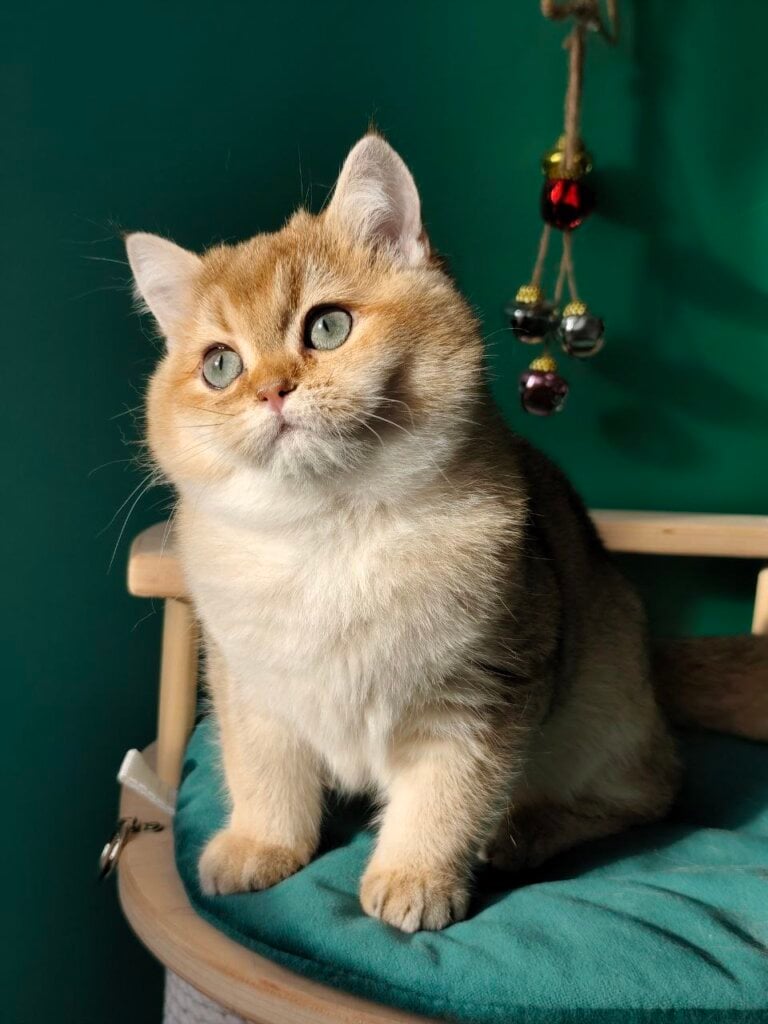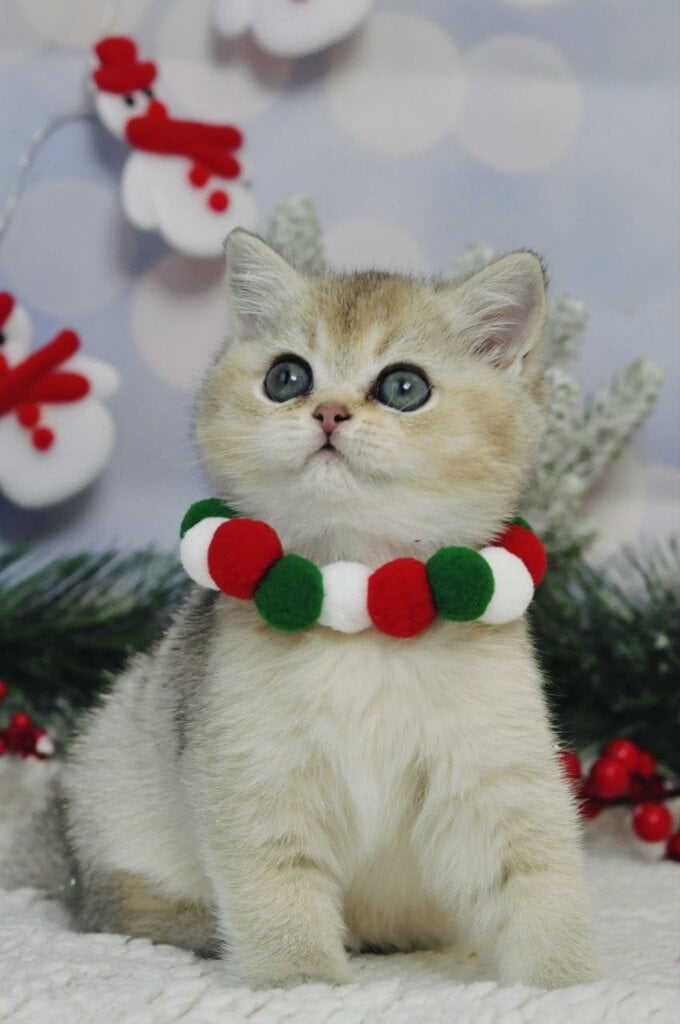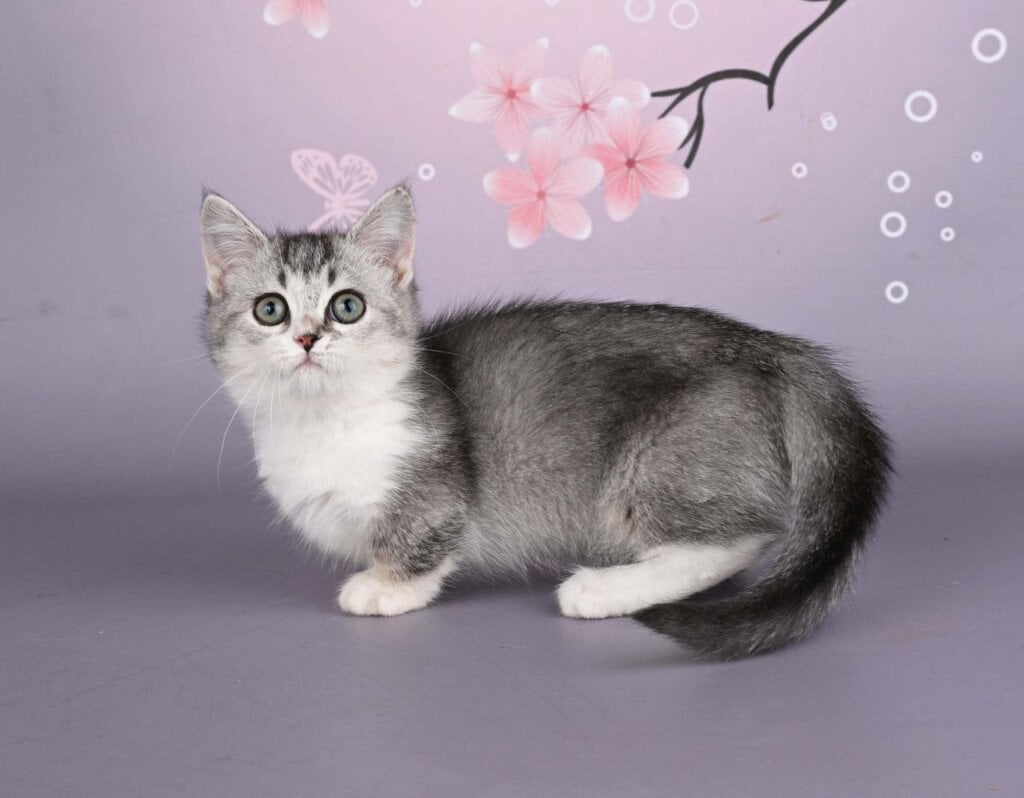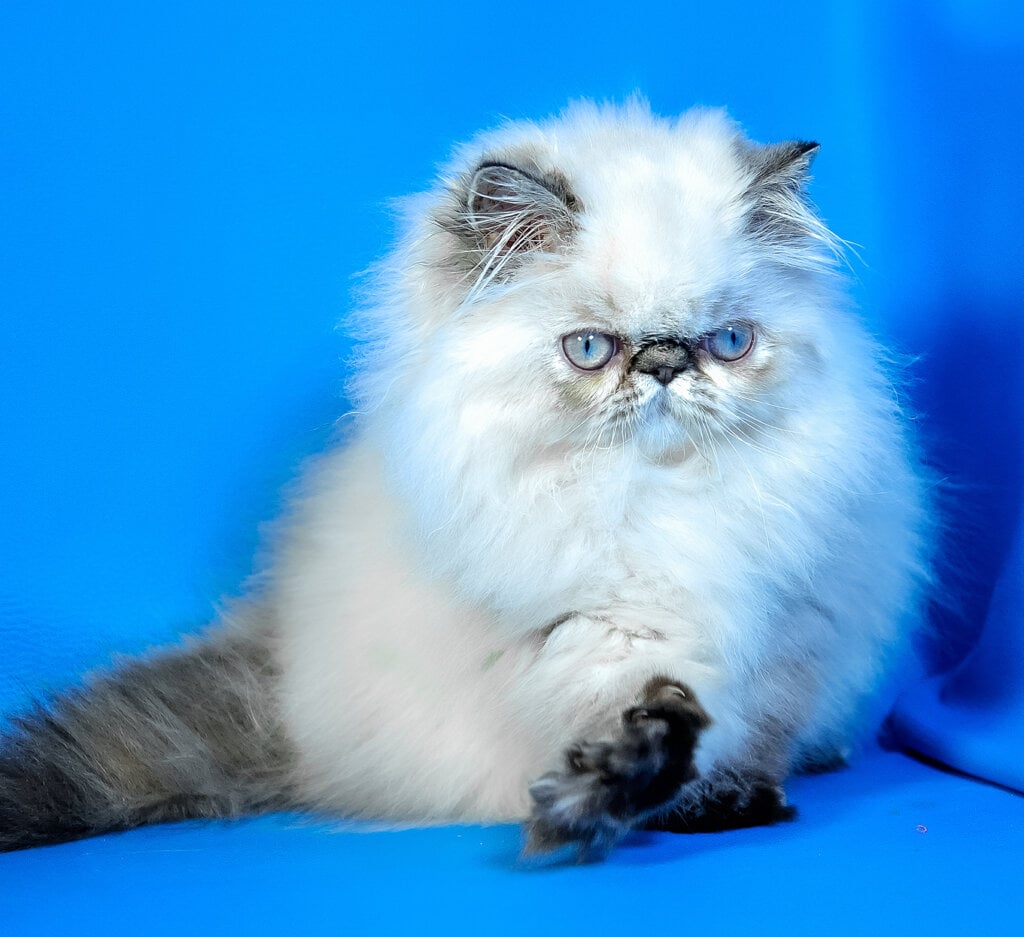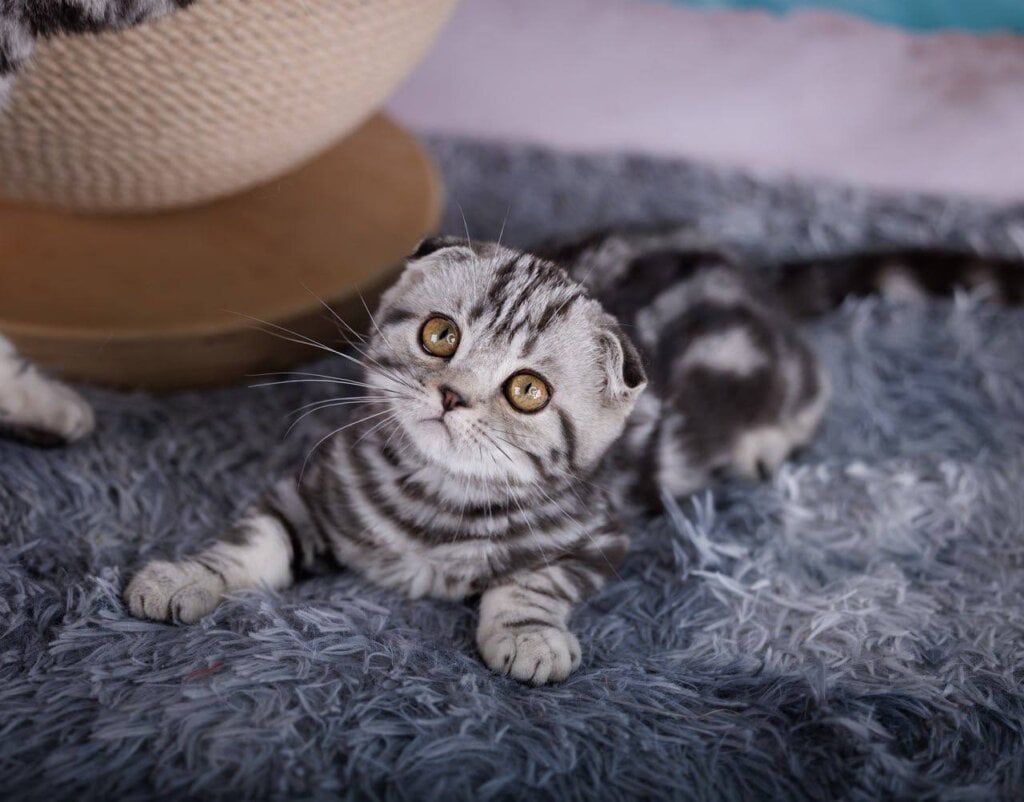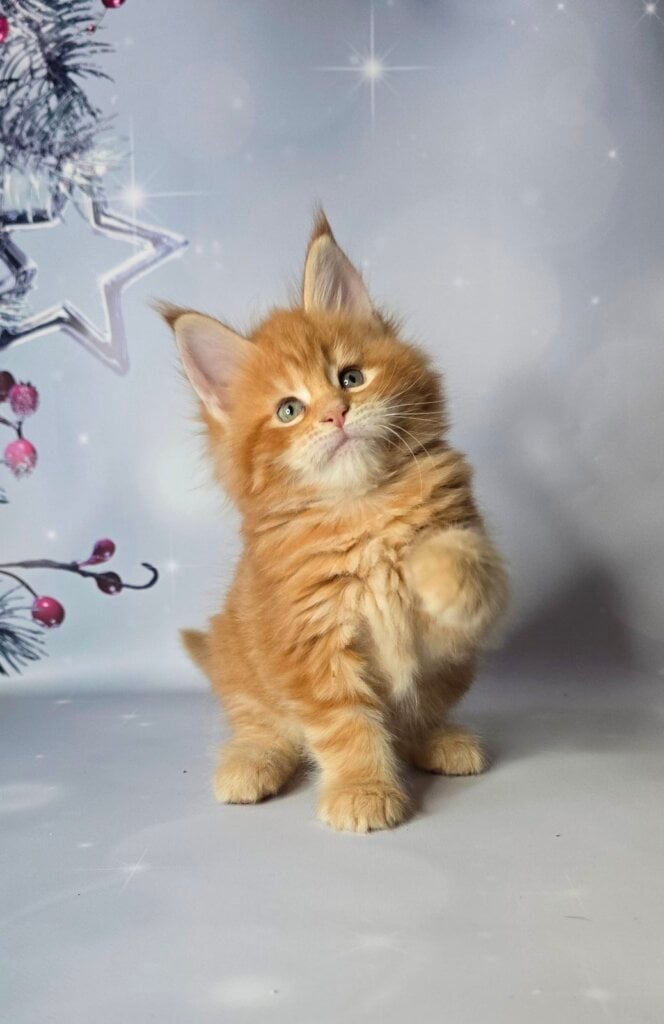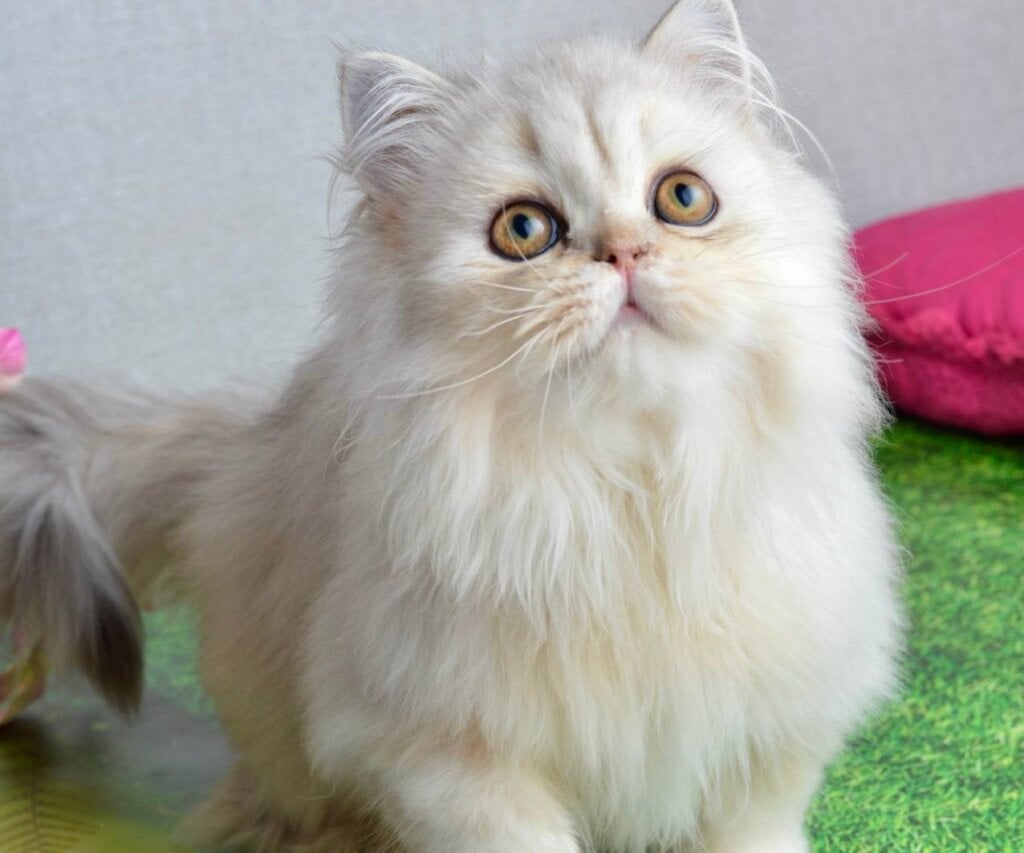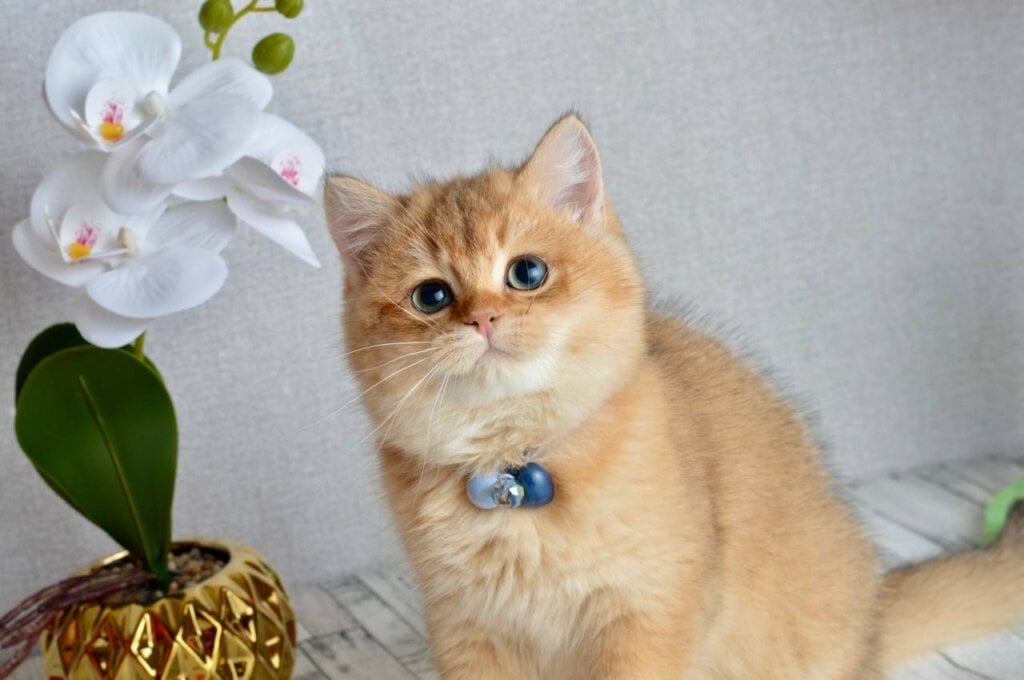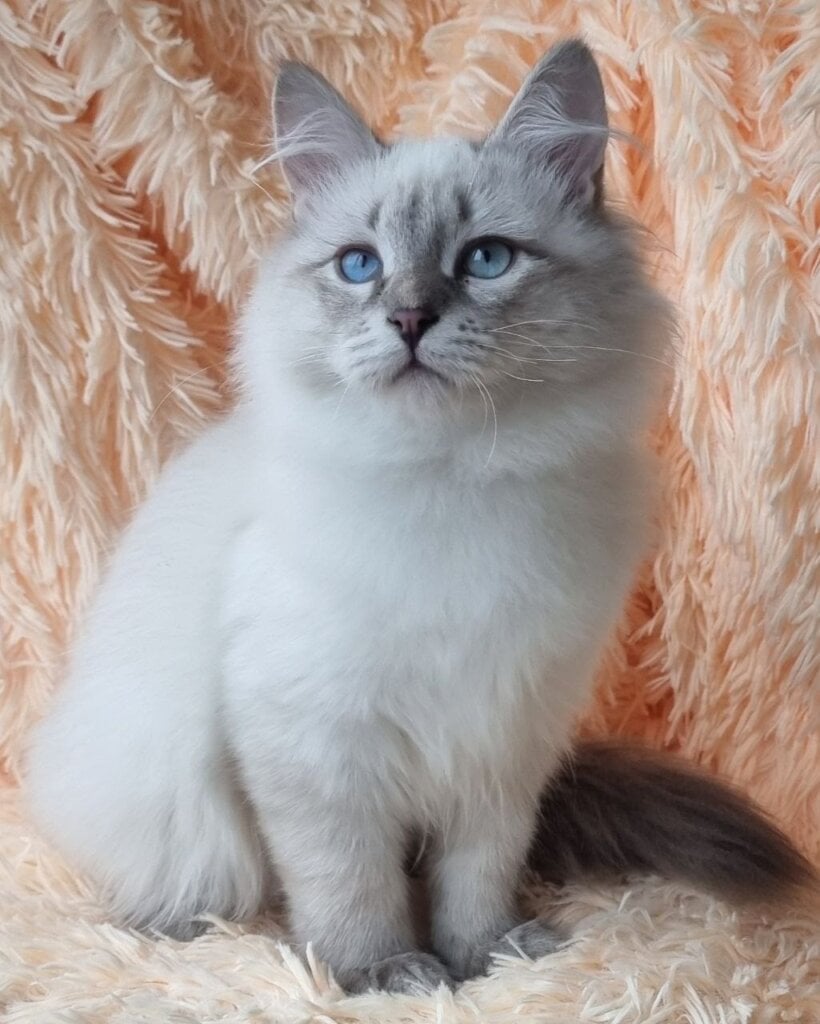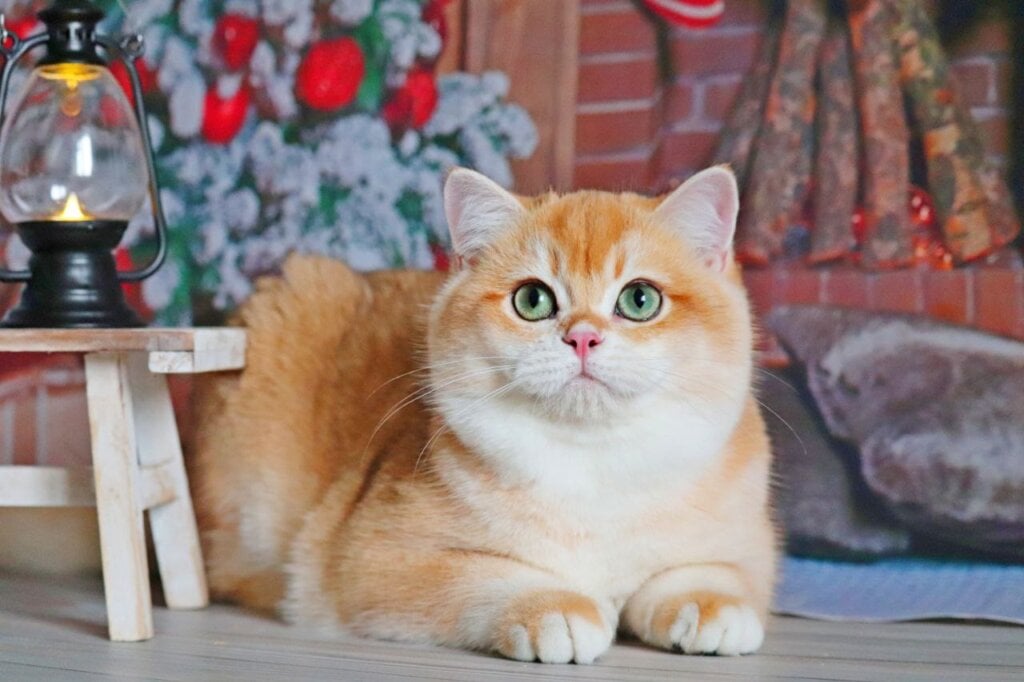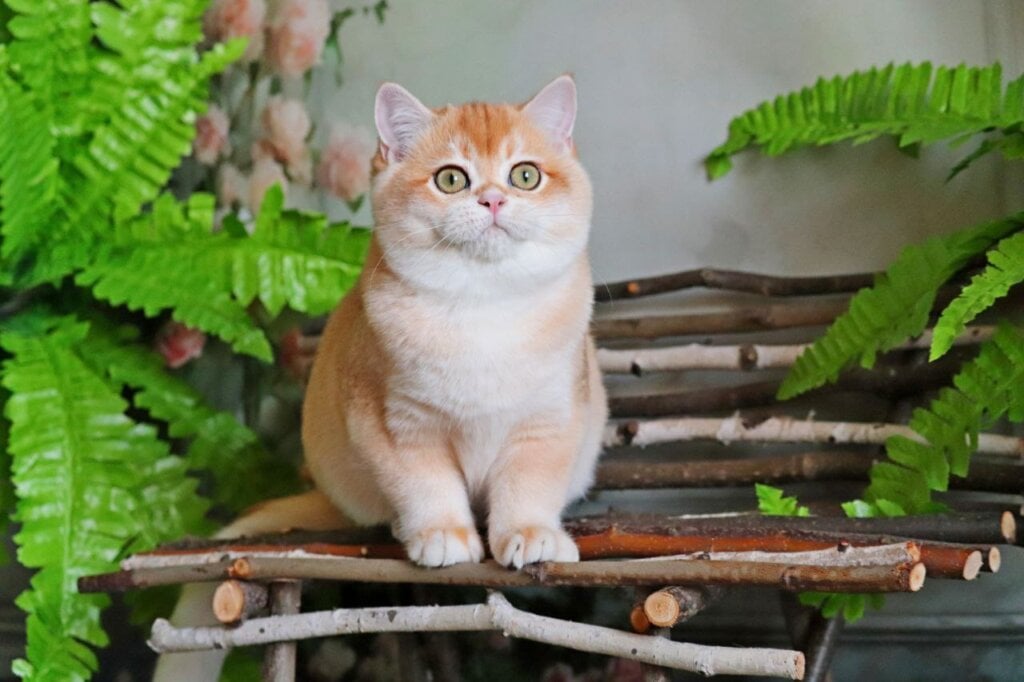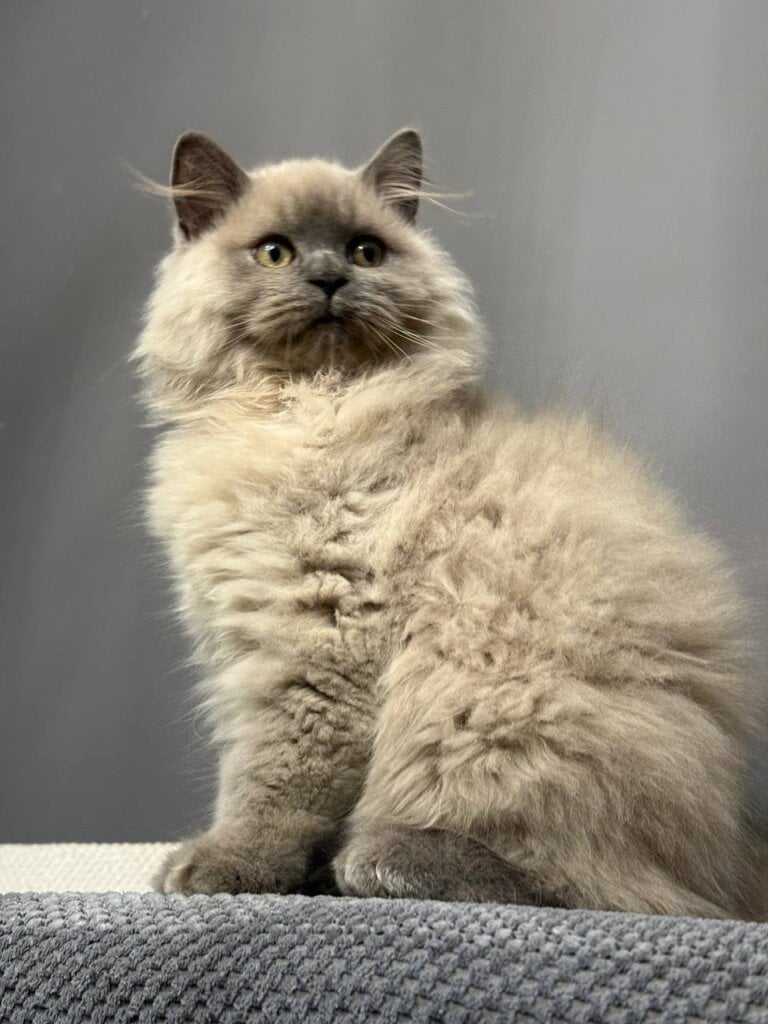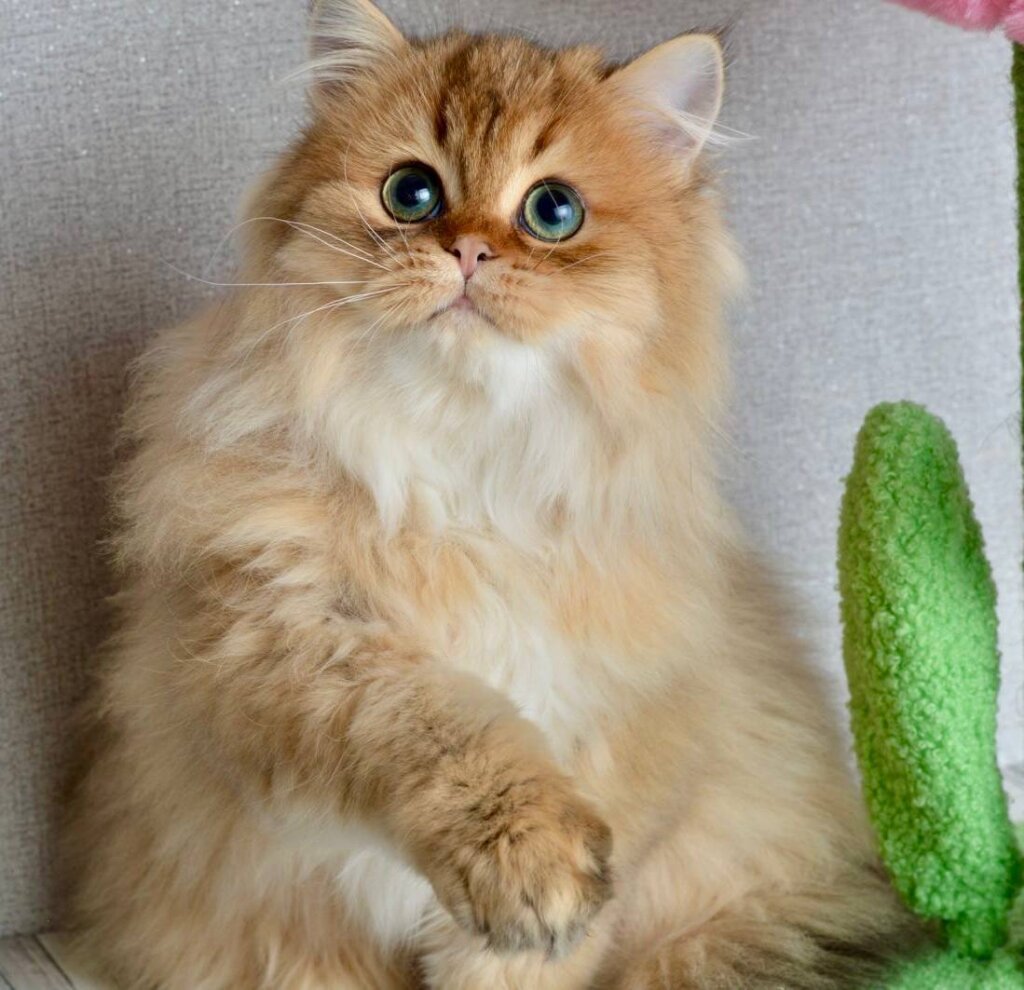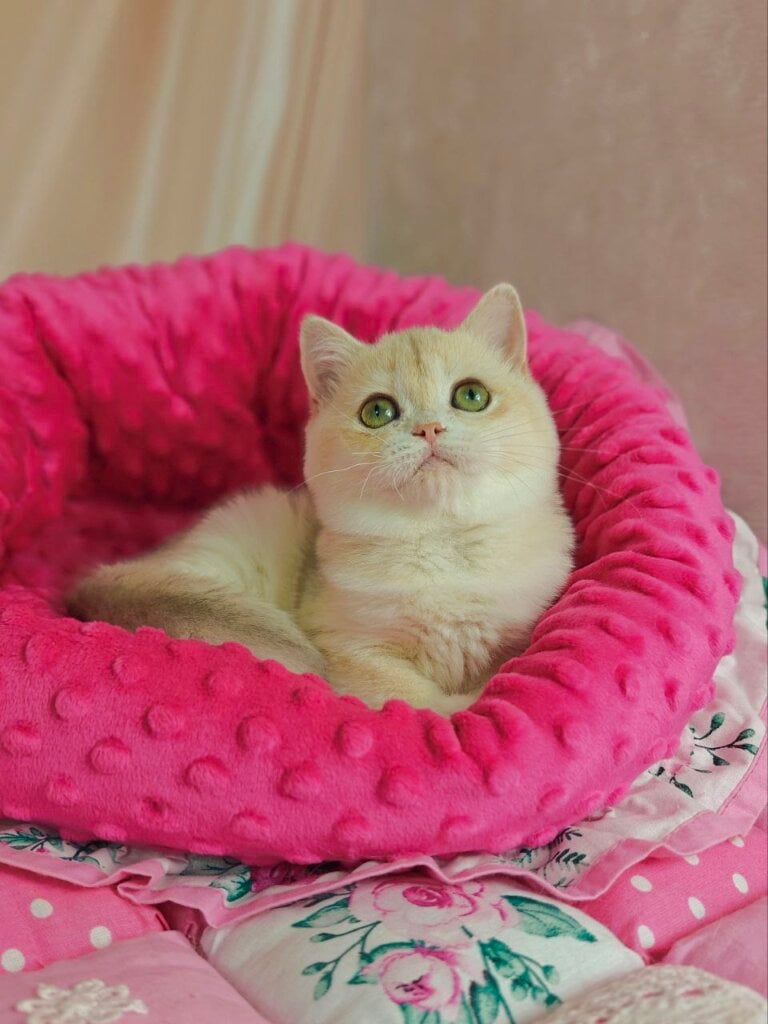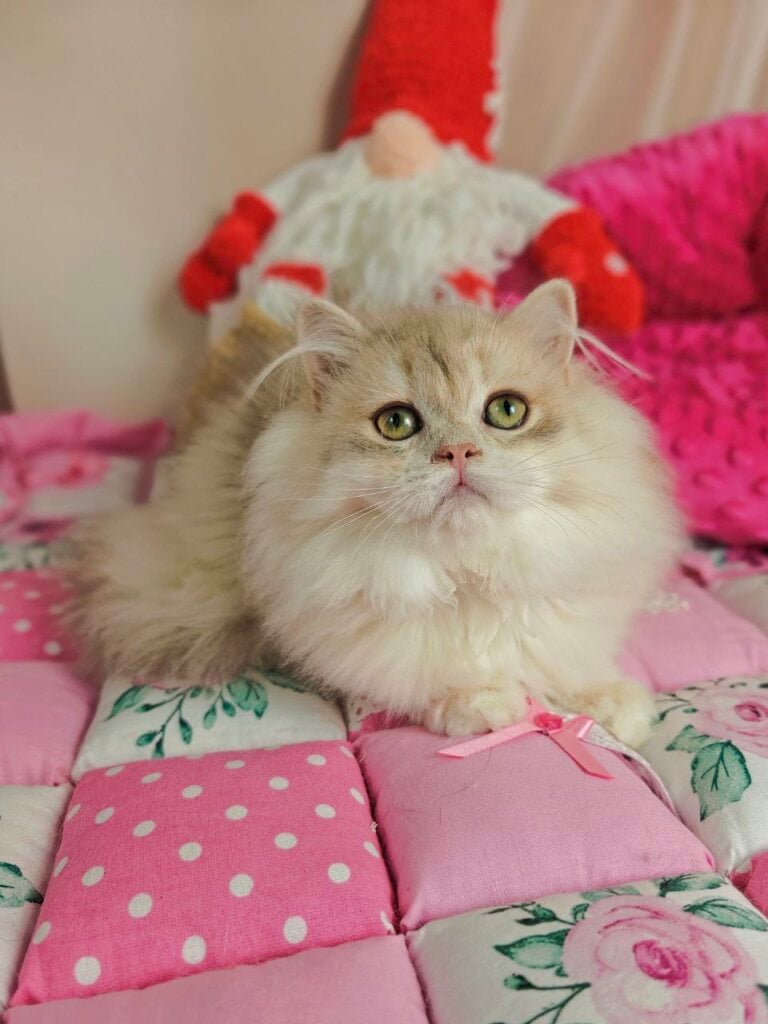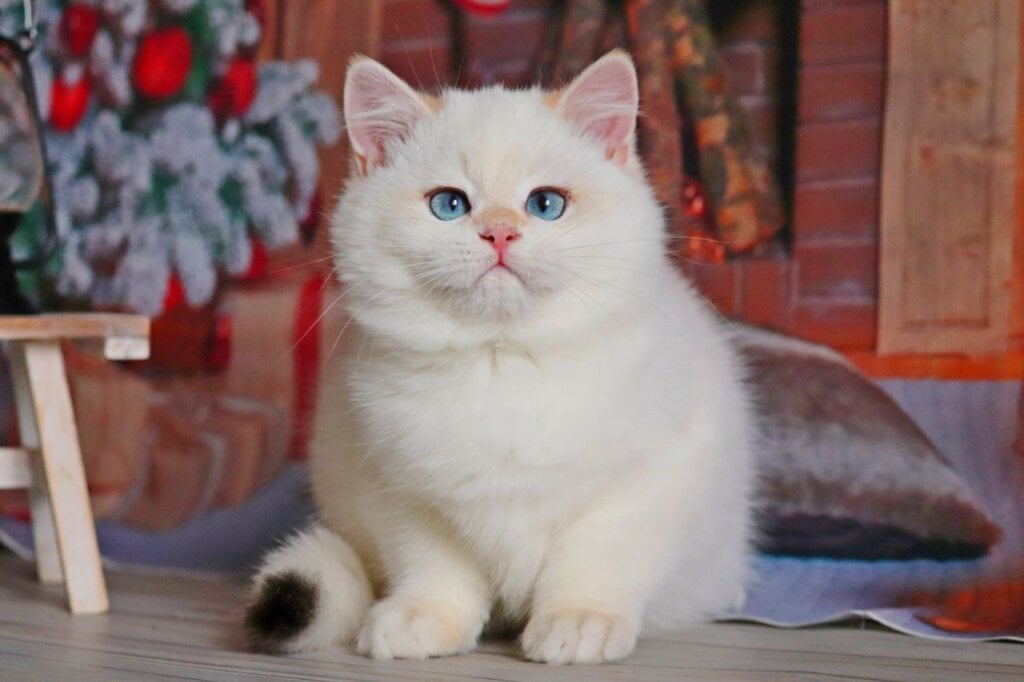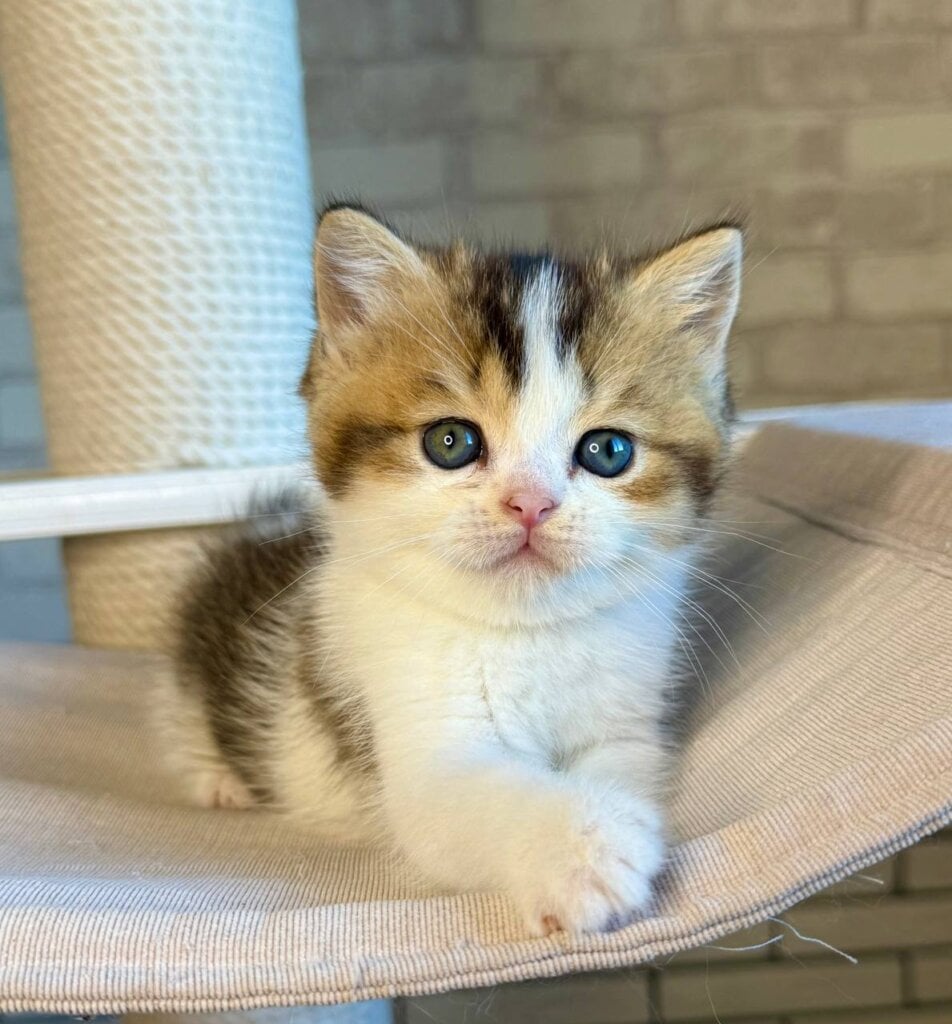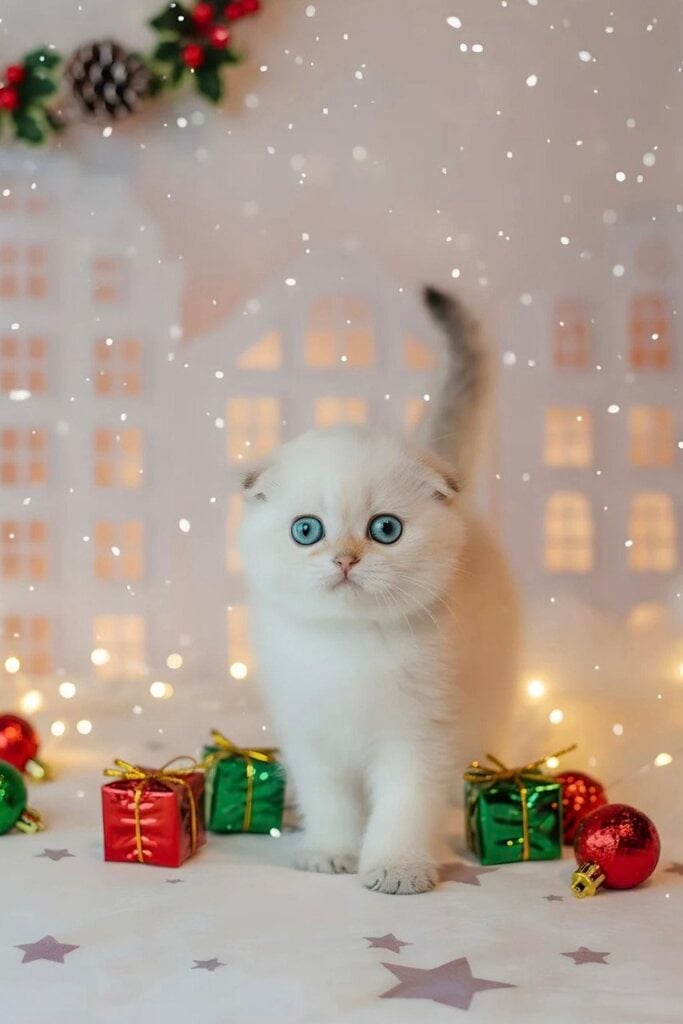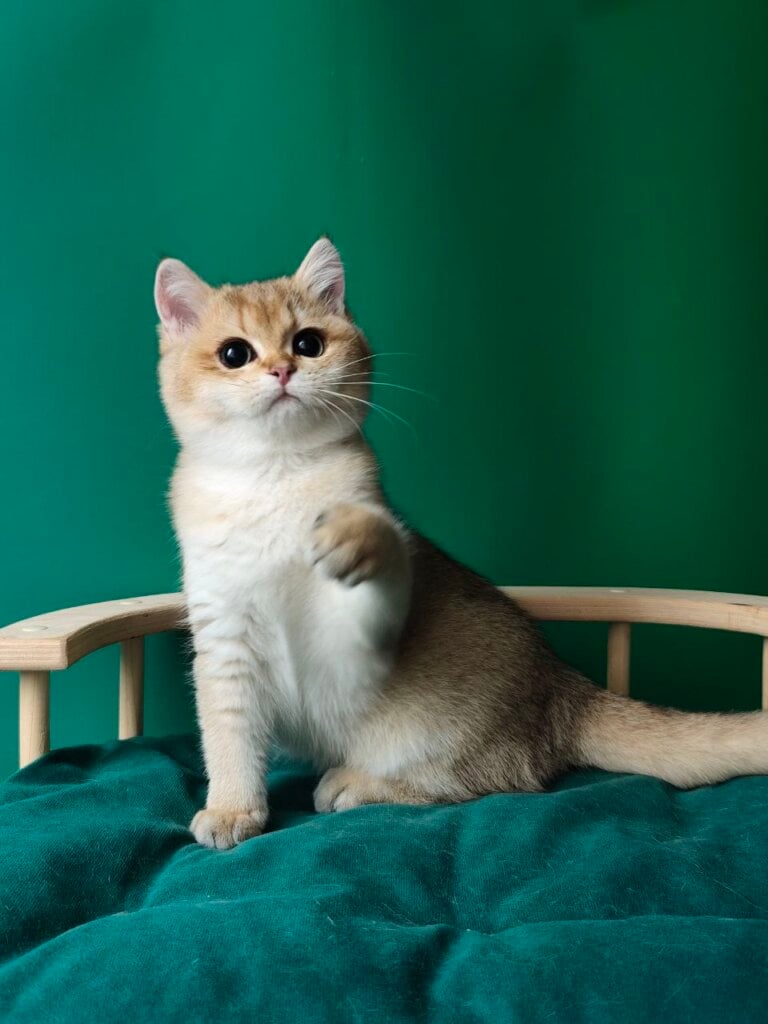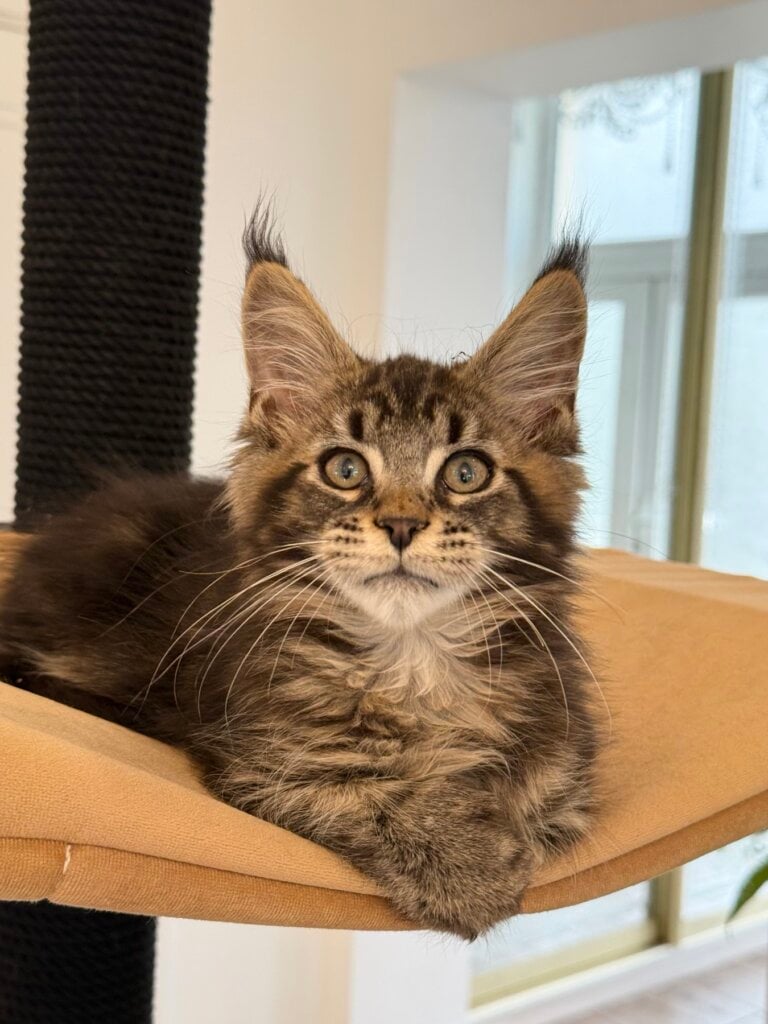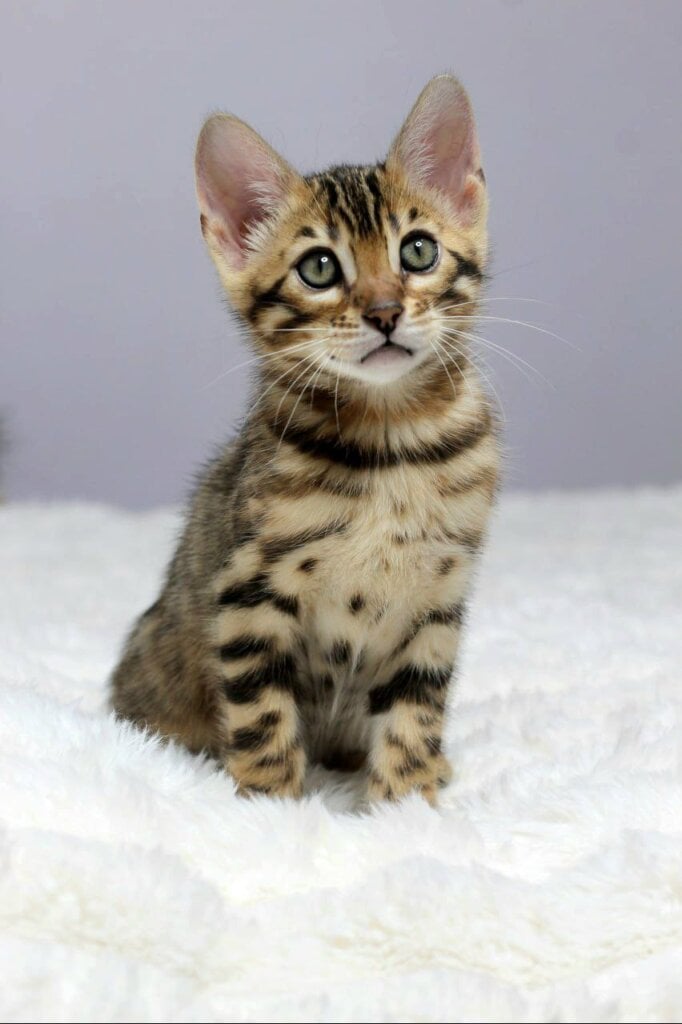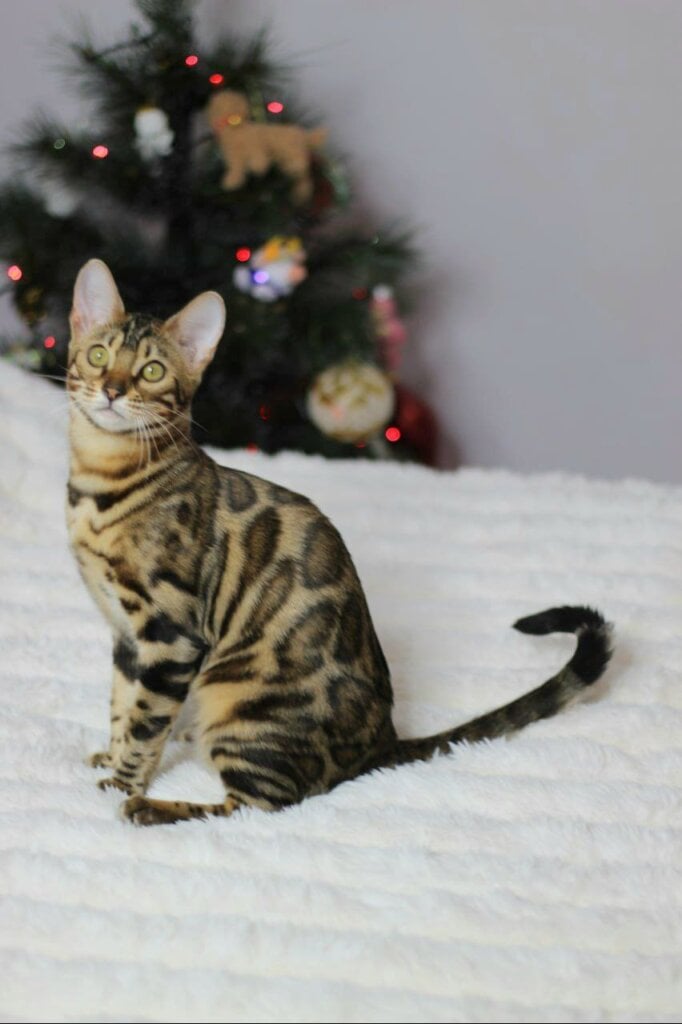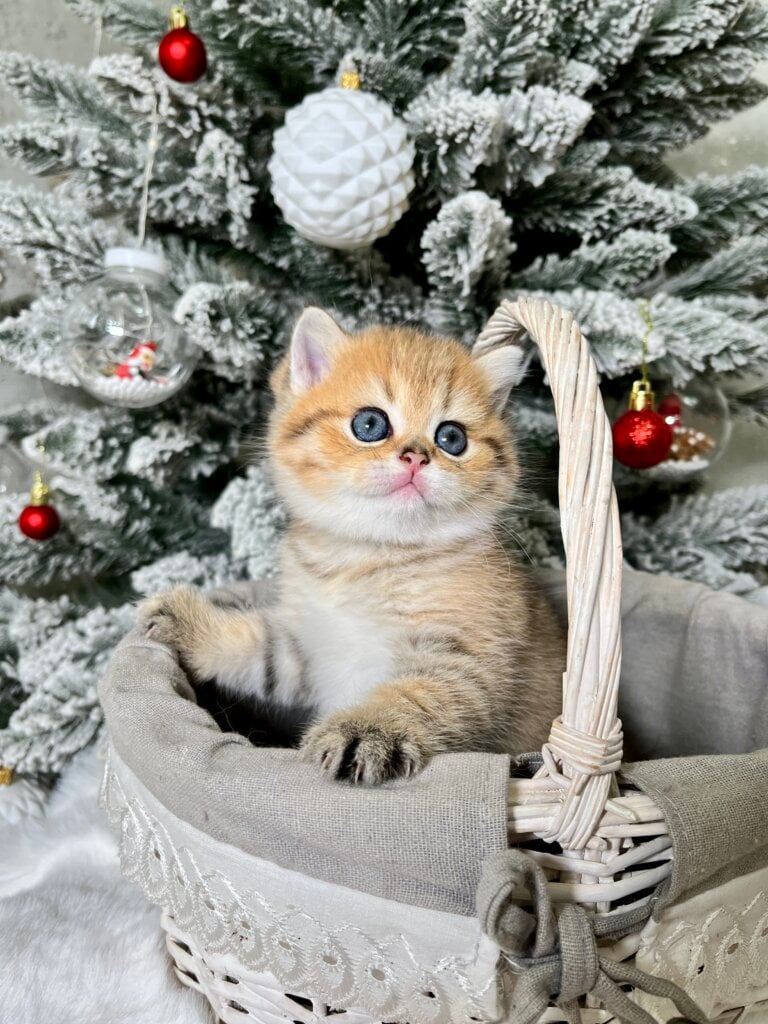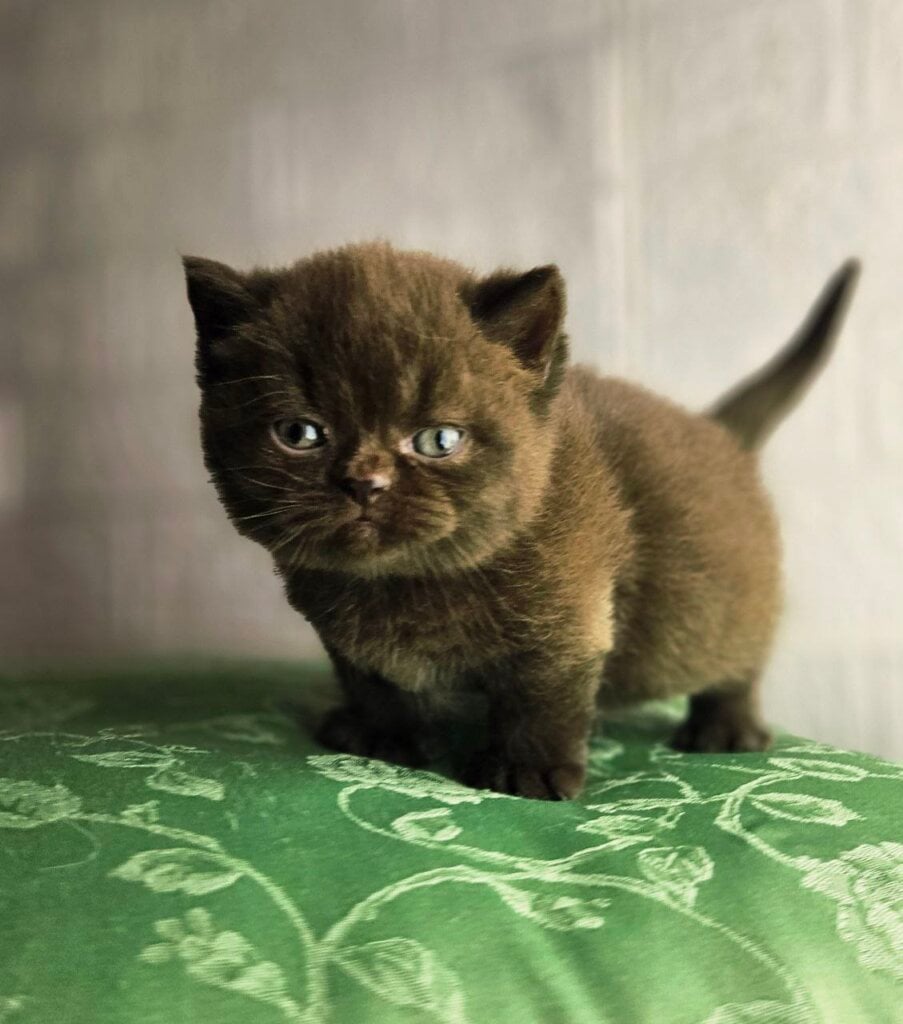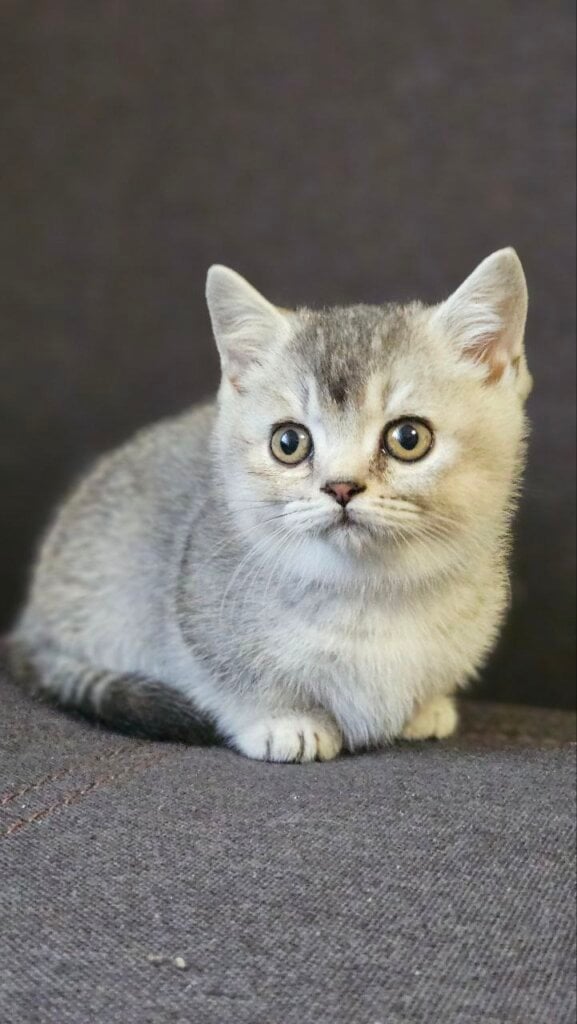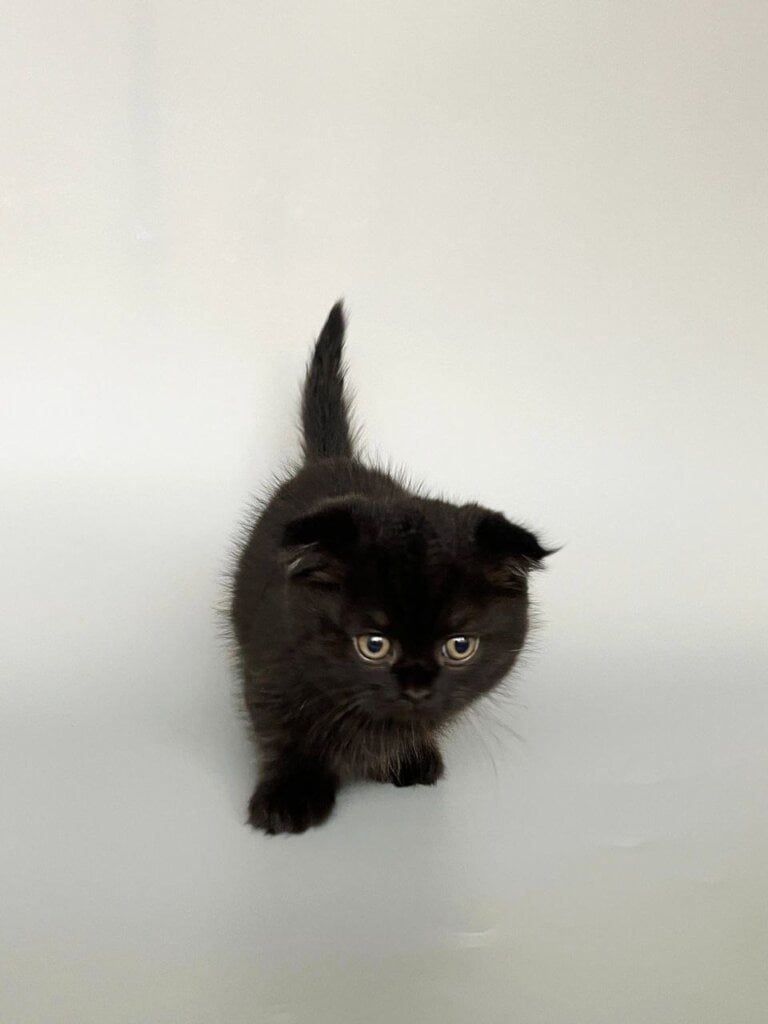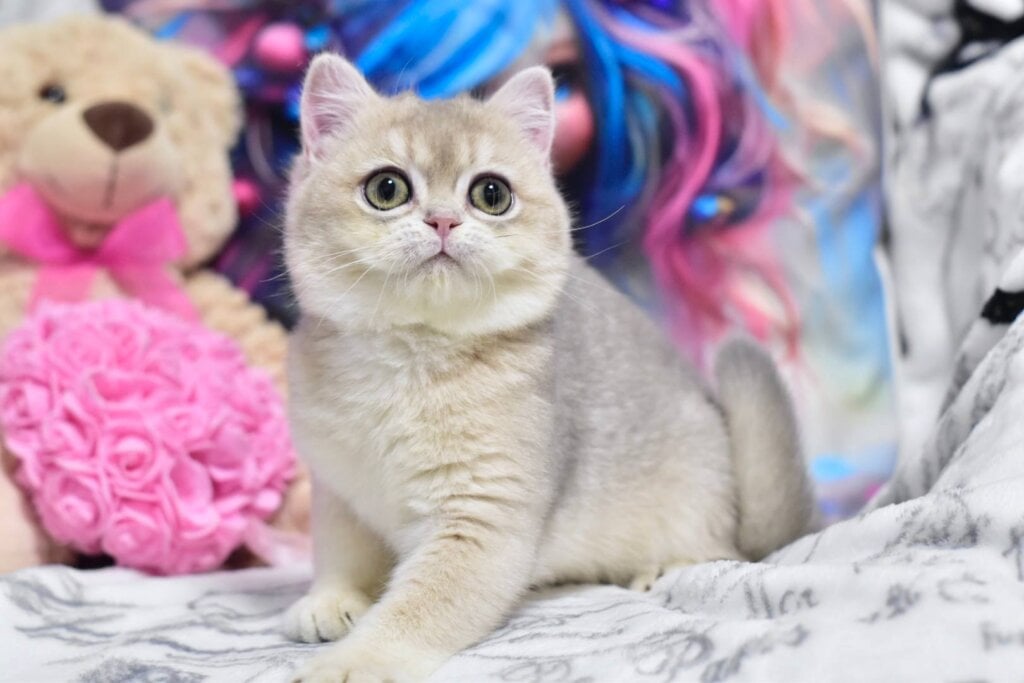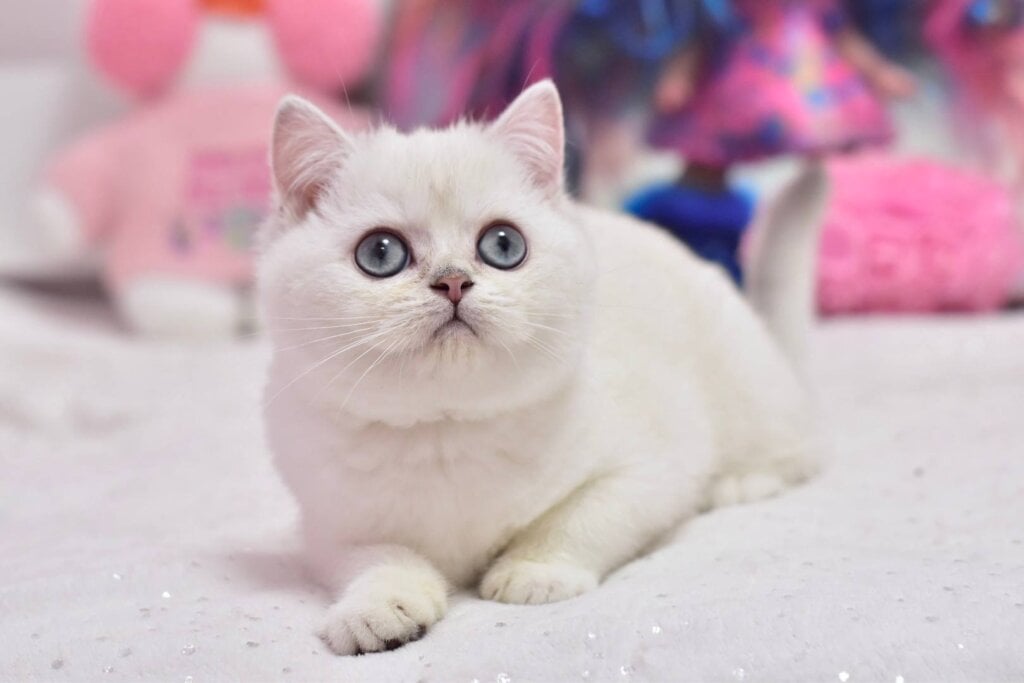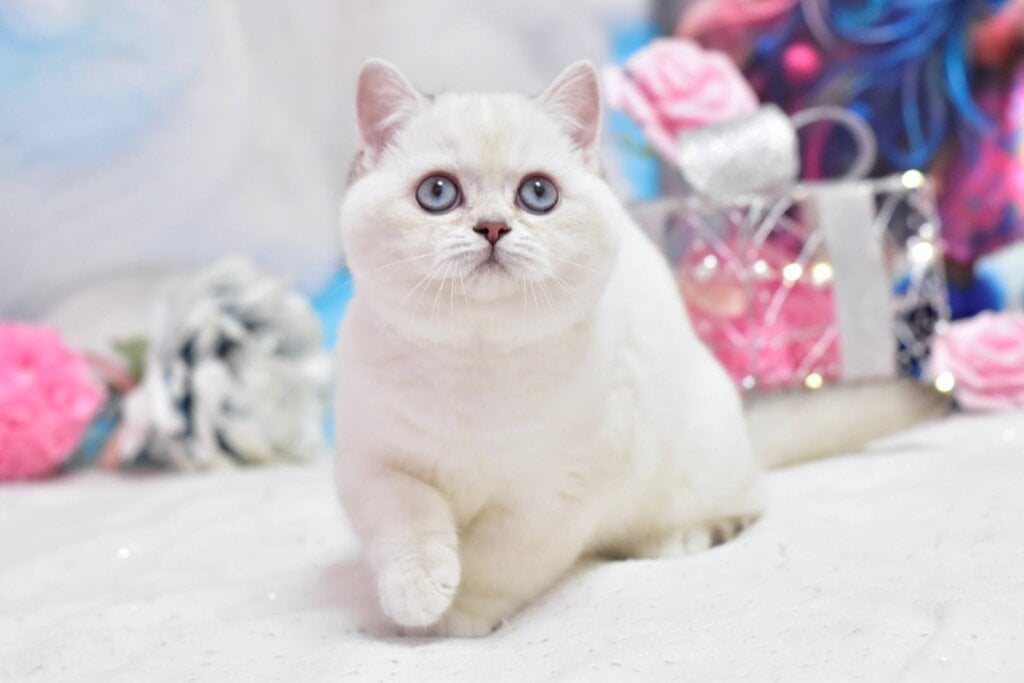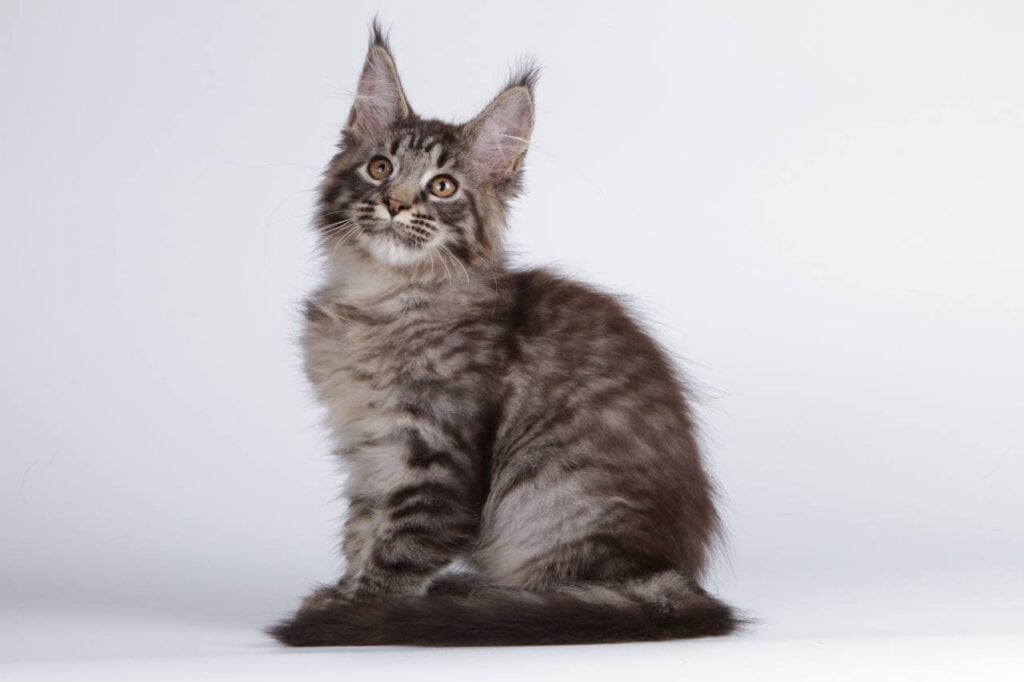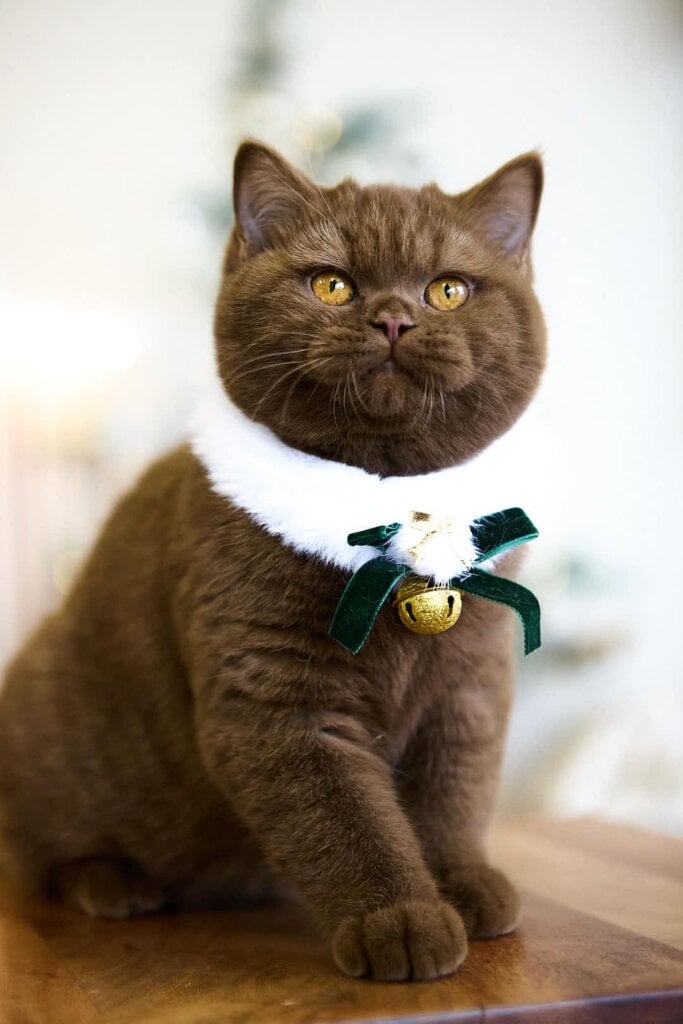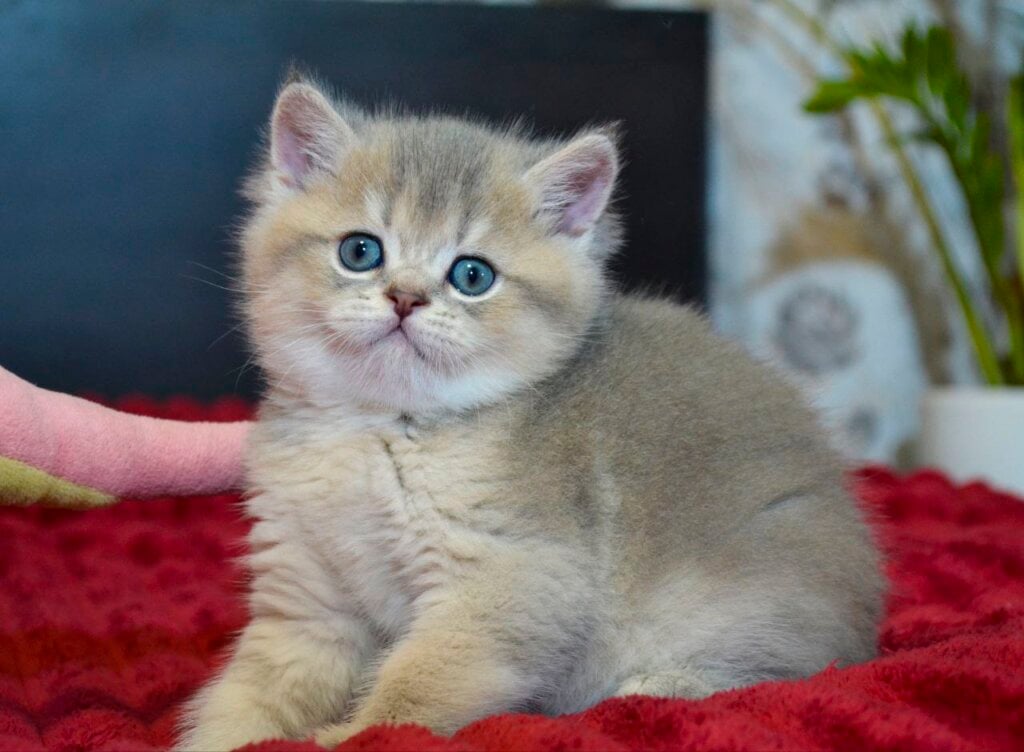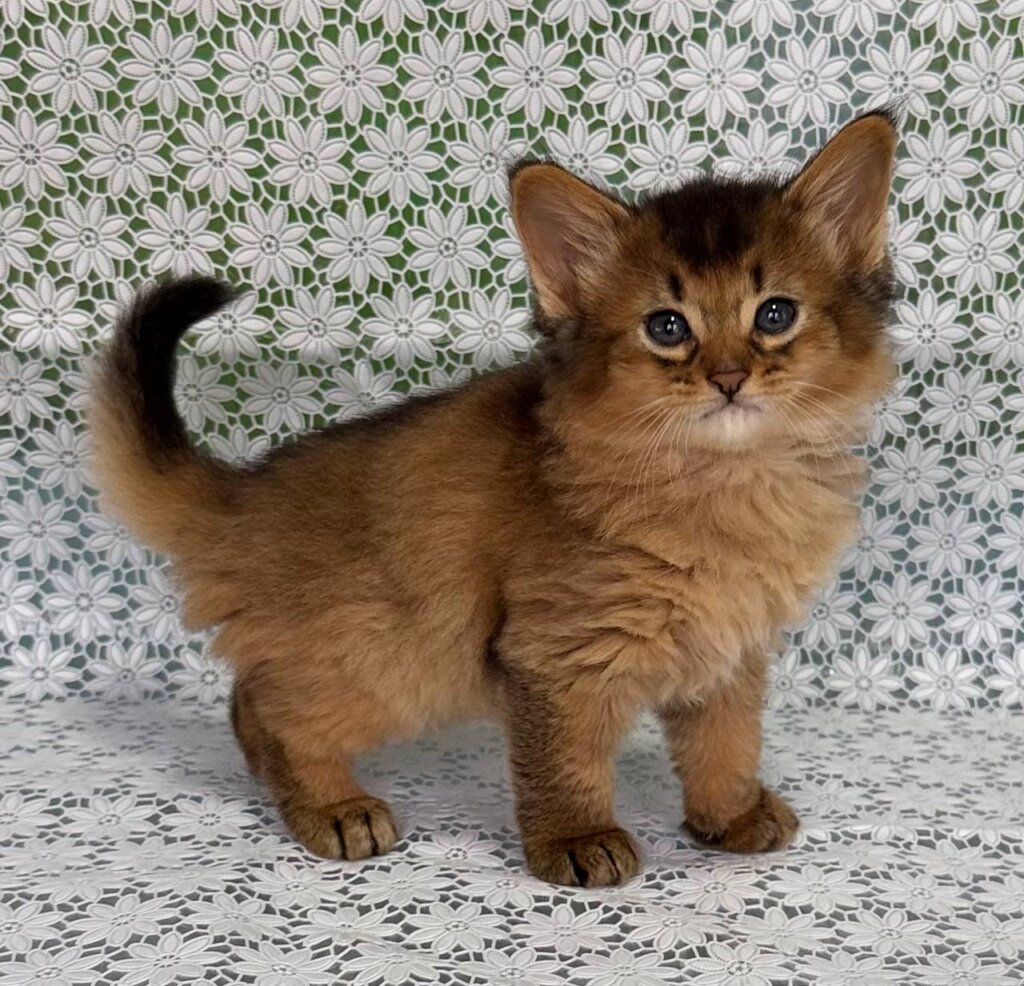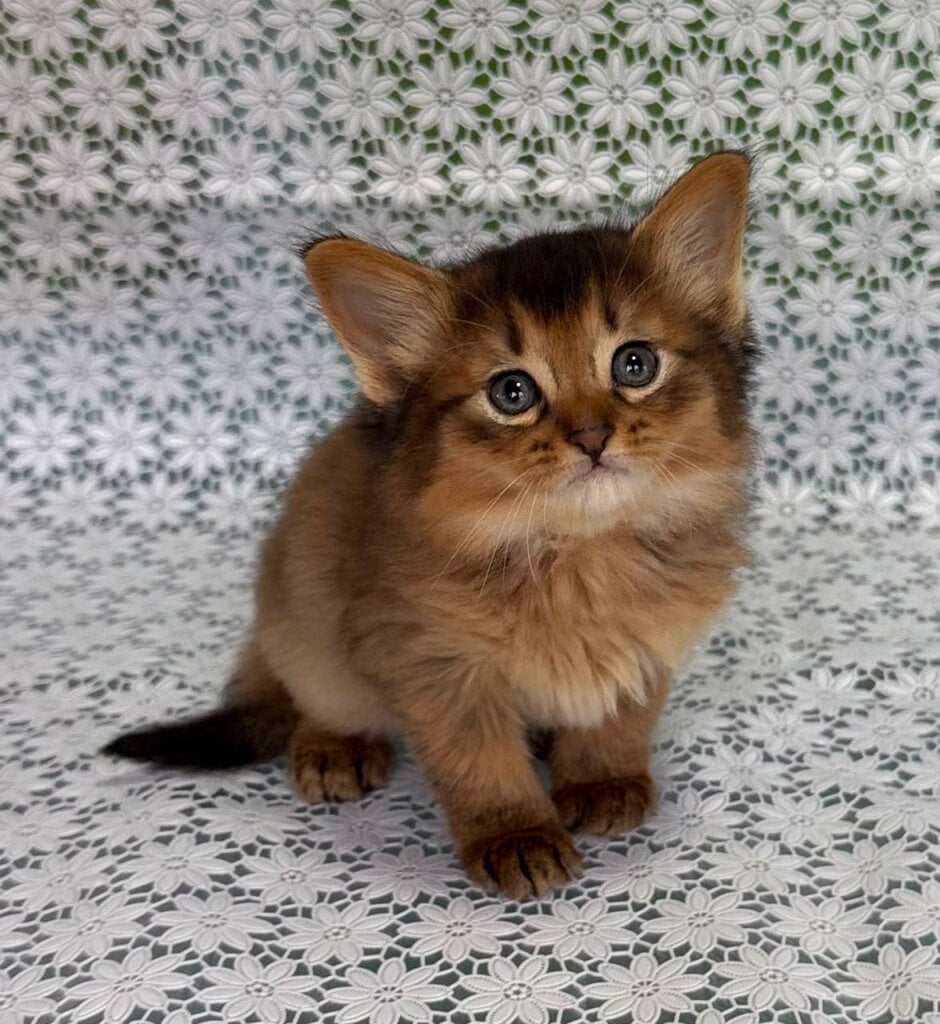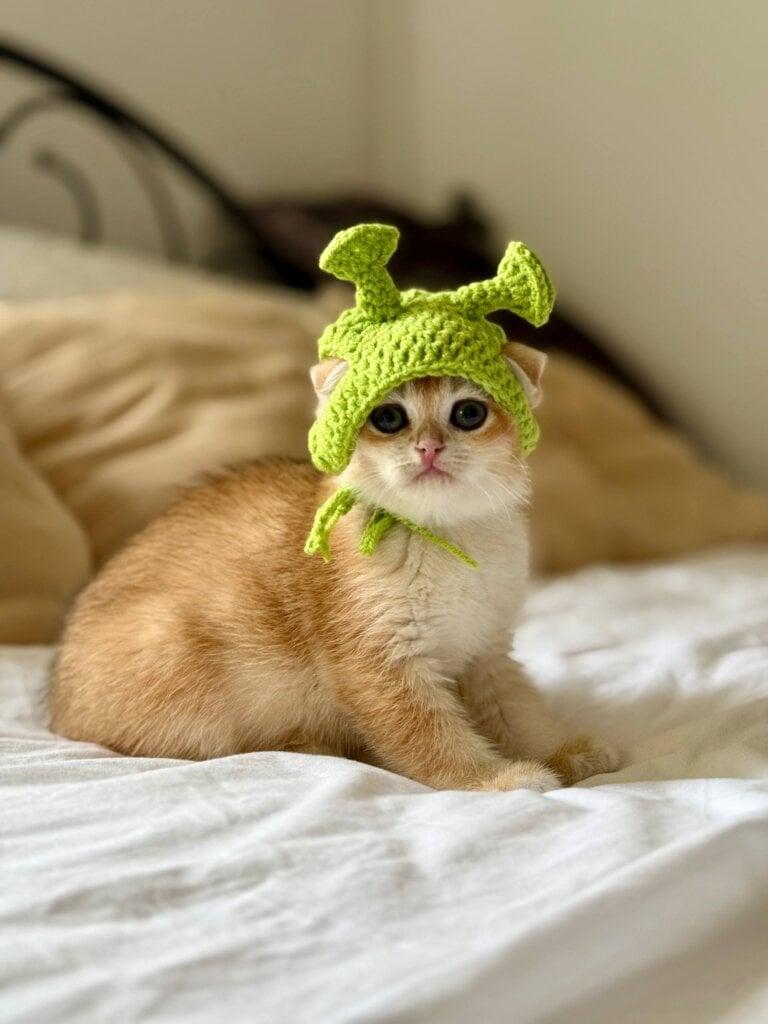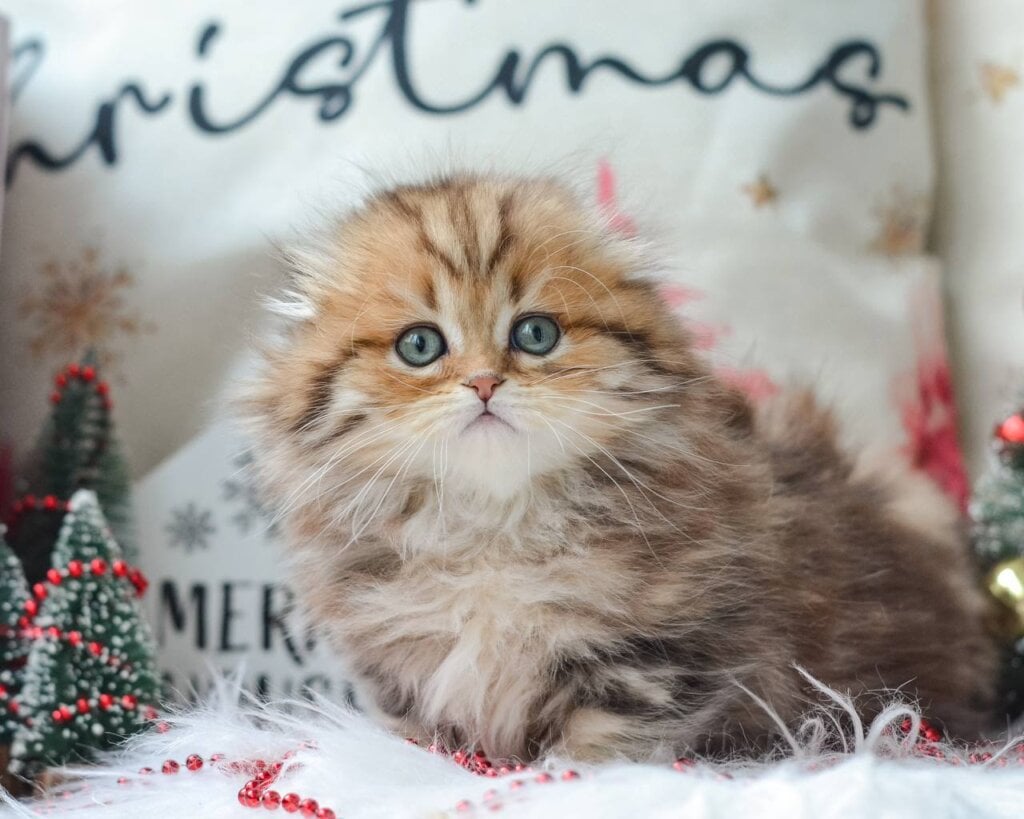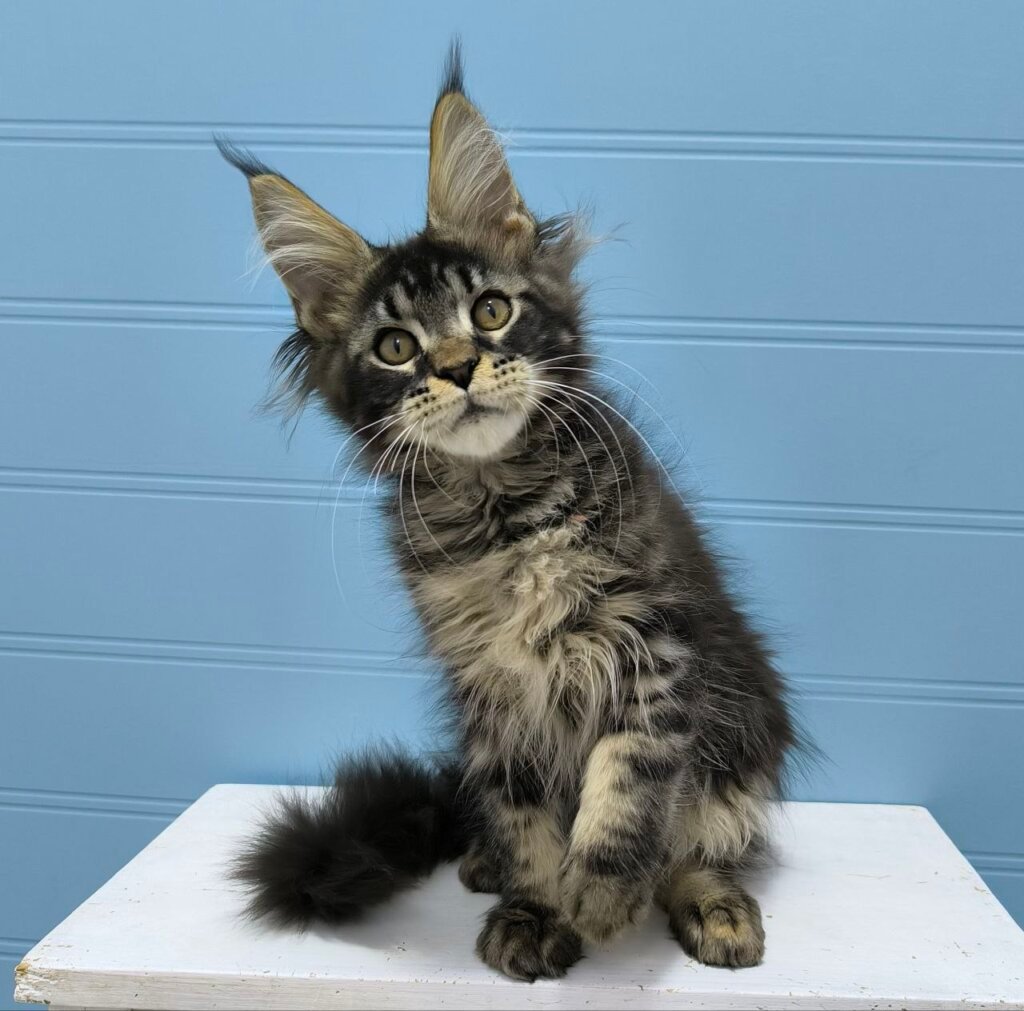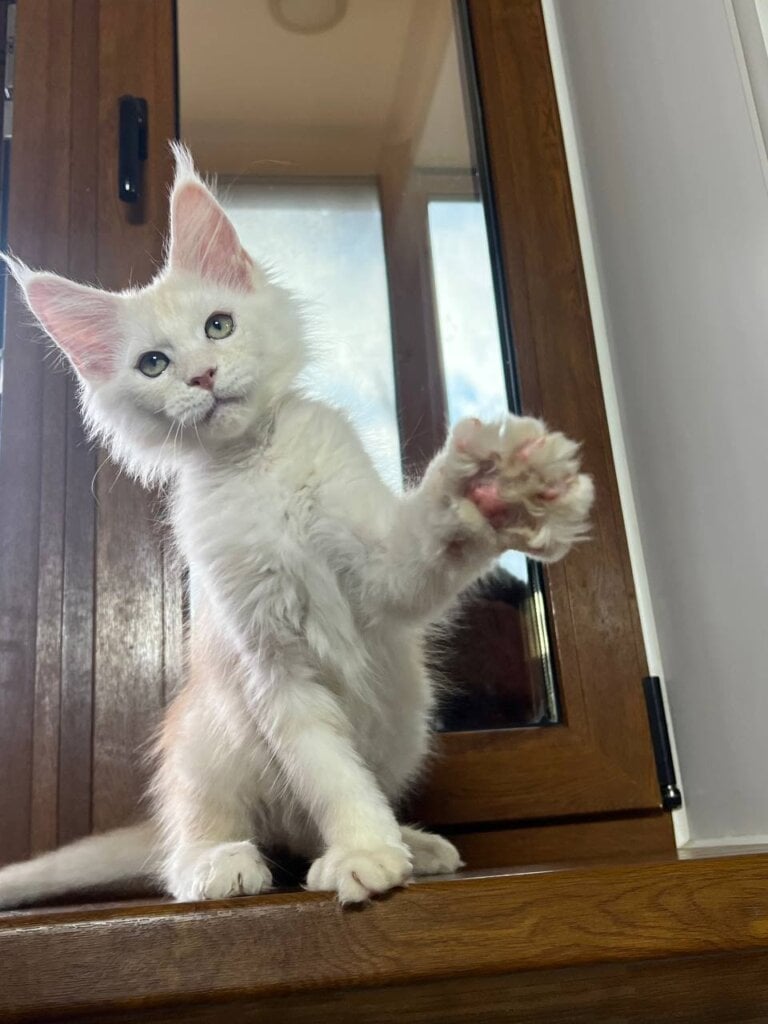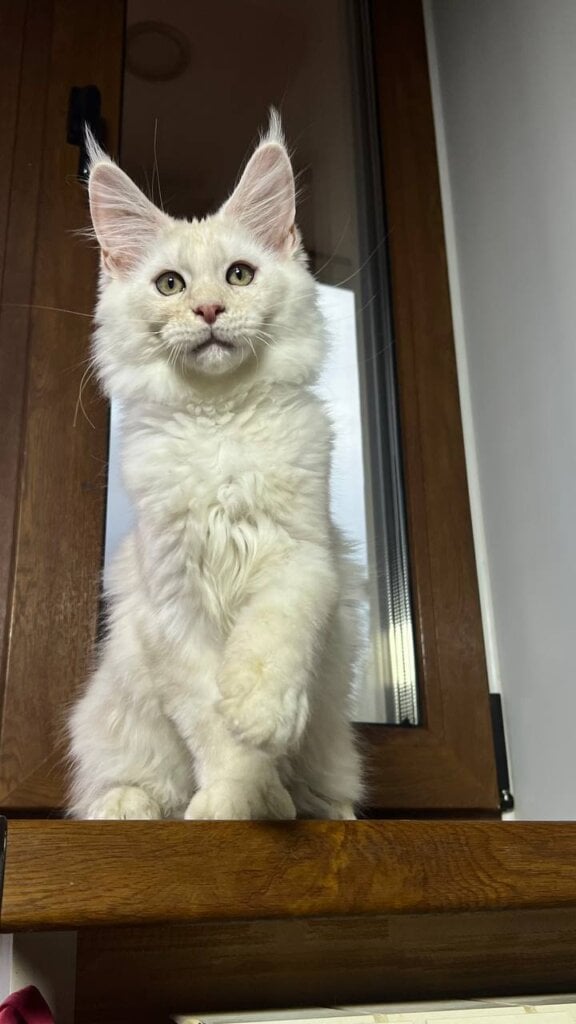Female Munchkins tend to reach 15-20 cm in height and weigh anywhere from 2.5-4 kg. Their little legs keep them tiny, but they’ve got big, muscular bodies.
A lot of people like their playful nature and fluffy fur. Each cat’s size can vary a bit depending on her parents and nutrition.
To understand what to expect, it’s best to consult with breeders specializing in healthy, well-bred kittens.
Female Munchkin Cat Size
Female munchkin cats are characterized by their small muscular frames and, most famously, their short legs-a mutation that originated naturally and was first seen widely in the 1980s. Their special construction distinguishes them from other breeds, providing them a unique & adorable appearance that captures the hearts of countless families around the globe.
Most adult female munchkins weigh 2.2 – 4.1 kg (5 – 9 lbs) and measure approximately 13 -18 cm (5 – 7 inches) in height. Although their little stature is a hallmark of the breed, it’s not indicative of their spirit – these cats are playful, sociable, and frequently as nimble as bigger cats.
1. Weight Range
Kittens begin tiny, female munchkins clocking in at 0.9 to 1.4 kilos (2 to 3 pounds) at three months. By six months, they average 2.2 – 3.2 kg (5 – 7 pounds), close to their adult size. Most will reach their full adult weight-between 5 and 9 pounds-by 12 months.
This intersects with that of many house cats; however, munchkins’ petite frames make their weight more apparent. Weight can fluctuate depending on each cat’s genetics and health. For instance, stockier munchkins might reach the higher end of the scale, while smaller framed cats remain lighter.
Diet, exercise, and even anxiety can contribute. Monthly weight checks will catch problems like obesity or illness early.
2. Height and Length
Adult female munchkins measure only 5 to 7 inches tall. Their legs, which are approximately half the length of those on normal domestic cats, contour their diminutive stature. It’s what makes the breed so distinctive in a crowd.
Even though their height doesn’t increase much after their first birthday, it’s good to have owners measure their munchkin’s growth in that first year. Short legs might somewhat restrict their jump height, but plenty of munchkins still sprint and leap with impressive ability.
3. Male Comparison
Male munchkins are a little chunkier, typically tipping the scales at 6 – 10 pounds and reaching as high as 8 inches. Still, the difference between the boys and girls is a small one-they both have the signature stubby legs and compact bodies.
Both genders possess that same mix of playfulness and curiosity, and their difference in size doesn’t impact their temperament or energy. Munchkin cats, male or female, make any home a happier place.
4. Breed Standards
Cat organizations such as WCF and TICA state that female munchkins should be small to medium in size, with muscular bodies and short, strong legs. Adhering to these breed standards is important for breeders, as it maintains the breed’s health and purity.
Good breeders care about these rules, not just for appearance but for health. Taking on a registered cattery can ensure that your cat fulfills these requirements.
Their Growth Journey
Girl munchkin cats have their own growth journey molded by their DNA and frisky personalities. The majority of their growth occurs in the first year, full size at approximately 12 months. After two years, they don’t change much in size or weight – making their adult look pretty darned predictable.
Our little rascals are tiny but full of energy, and their growth journey is characterized by rapid shifts in kittenhood, predictable increases in adolescence, and sustained adulthood.
Kittenhood
Newborn female munchkin kittens are minuscule, at just 2 – 4 ounces – small enough to nestle in your palm. At just 2-8 weeks old, they begin to open their eyes, hear and become curious about their world.
At 3 months, most munchkins fall in the 3 – 5 pound and 4 – 5 inch height range. It’s a phase of rapid scaling. Social play and gentle handling assist them to learn and feel secure.
Early socialization defines their adult behavior, resulting in a friendlier and more flexible dog. Routine vet visits matter now, as they help catch health issues early and keep growth on course.
Adolescence
Growth accelerates between 3 – 6 months, with weights climbing to 4 – 6 lbs and heights up to 6 inches. At 6 to 9 months, female munchkins tip the scales at 5 to 8 pounds. This is when you start seeing them fill out and their bodies become more developed and adult shaped.
Nutrition matters most in this period. A nutritious diet full of protein and essential vitamins keeps bones and muscles strong. Muscle growth and joints require some TLC here, particularly because munchkins have stumpy little legs.
Active play builds muscle, so toys and climbing posts are invaluable. Check with your vet if you’re ever in doubt about their diet or weight.
Adulthood
Female munchkin cats are at their full adult size by 12 months, typically weighing 6 to 9 pounds and 5 to 7 inches tall. Their puppy spirit never diminishes, even as their size plateaus.
After the first year, height and weight fluctuations are slight and by the age of two, they are fully grown and solid. Even though they’re tiny, these cats remain spry.
They adore to pursue, ascend and investigate. Having scratch posts and puzzle feeders and interactive toys has them sharp and happy. Keep their world stimulating for mind and body.
Predictable Size
There’s not going to be too much difference in a munchkin cat’s size after the first year. Their growth fizzles out by the second year. Most remain within adult size. They hold onto their mischief.
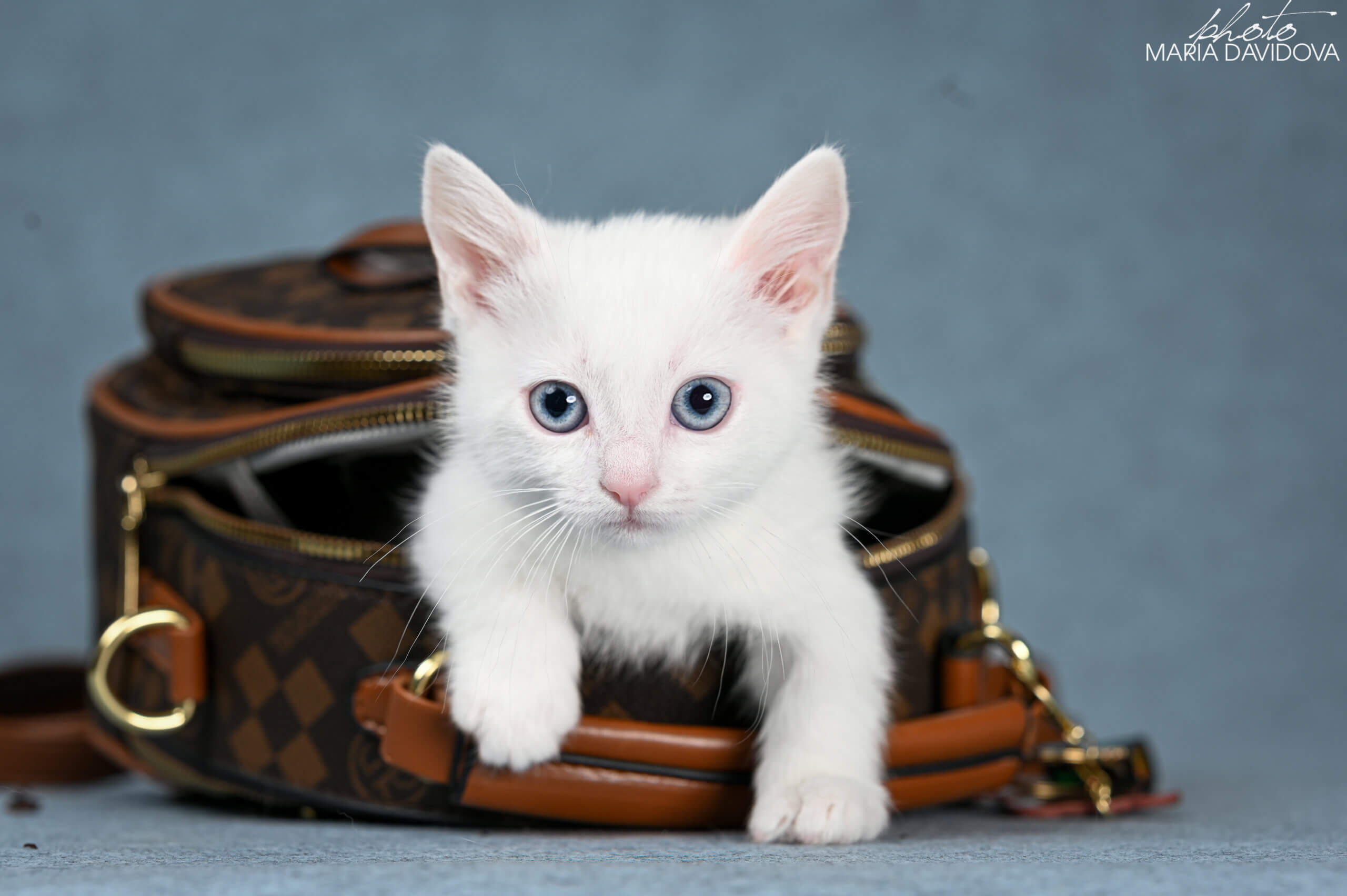
What Influences Their Size?
Female munchkin cats aren’t all the same size and size is for many reasons. These cats are renowned for their diminutive size-typically reaching only around 18 centimeters tall-their growth and ultimate size is influenced by a variety of factors. Some of the main influences include:
- Genetics and parentage
- Nutrition and diet quality
- Activity levels and living environment
- Breeding practices and health screenings
Genetics
It’s the munchkin gene that provides these cats their iconic stumpy legs, which tend to be roughly 8 centimeters shorter than the typical feline. Female munchkin cats generally weigh between 4 and 8 pounds, their final size is typically determined by the time they are a year old.
Parentage is a huge factor, kitties with petite moms usually stay small. There are three leg length types-standard, supershort and rug hugger-so even within the breed, size can fluctuate. Some lines exhibit more genetic variation, allowing variations in size and weight.
Peripheral size is determined by nutrition, while internal organ size is largely genetic. Responsible breeders don’t mate two munchkin parents, as this can undoubtedly lead to stunted growth or damage kitten’s health.
Nutrition
What a munchkin cat eats has a huge influence on how well she grows. A diet high in animal-based protein, healthy fats and balanced nutrients is essential for rock solid muscles and bones.
Kitten or small-breed dry foods, or wet foods marked as growth and development are usually best. Munchkins need:
- Plenty of protein from chicken, fish, or turkey
- Balanced fats and carbs for energy
- Extra vitamins and minerals to help bones grow
Daily meals-two or three times a day-maintain consistent growth and prevent growth spurts. It will develop poorly and lack energy if you skip feeding or feed inferior quality food, so it’s worth following a regimen.
Environment
A munchkin’s environment at home and day-to-day activities influence her development, as well. Residing in a home with abundant toys, climbing trees and secure areas to sprint around changes things.
Routine play maintains her weight and thins her muscles. Indoor cats-particularly munchkins-are typically less active, so without sufficient stimulation, they can become overweight or lose muscle mass. Owners can supplement by incorporating shelves, tunnels, and puzzles to keep cats moving daily.
Health Factors
Lordosis of some munchkin cats can impact their growth and life. Early health checks and only working with trusted breeders reduce the chance of underlying health problems that could stunt growth or damage quality of life.
Beyond the Tape Measure
There’s more to female munchkin cats than their size. Their appeal extends well beyond inches and pounds, sculpting where they nestle in homes and hearts across the globe.
Personality
Female munchkin cats are known to have courageous, captivating personalities that easily capture families. They’re playful and will pursue toys or glitter with genuine intensity-some are even “magpie-like” in their affinity for colorful or glimmering objects.
Although these cats have short legs, they’re fast, smart, and easily keep up with normal-sized cats in play and life. Most munchkin cats are outgoing and do well with daily play sessions and human bonding. They love companionship, trailing their beloved human from room to room.
With their deep-rooted prey drive, they require play that allows them to stalk, chase and leap, even if their jumps are a tad lower than that of a long-legged cat’s. Routine play keeps them happy and staves off boredom, which can devolve into mischief – these kitties are way too clever to just sit around doing nothing for too long.
For families with kids or other pets, their calm and loving demeanor makes them dependable companions. They’re fast learners and quick to adjust, frequently forming attachments to new siblings or pets in the household.
Lifestyle Impact
The size and body style of a munchkin cat influence certain daily care requirements. Lifestyle factors play an even more significant role. Safe indoor spaces with lots of toys and vertical spaces keep them moving.
These cats require routine-regular vet visits, timely vaccinations and a healthy diet all go a long way toward long-term health. Grooming too, particularly for long-haired moppets. Weekly brushing keeps their coat sleek and reduces mats or hairballs.
Even if you’re in a small flat or a hectic household, munchkin cats tend to cope just fine. Provide them with a secure napping area, some elevated shelves (they climb, of course), and plenty of affection. They’ll repay you with YEARS of fun and love.
Common Myths
It’s a myth that munchkin cats are in poor health or can’t move due to their stumpy legs. In fact, most munchkin cats are nimble and adventurous-many sprint up stairs, jump onto low tables and even scale walls like little panthers.
The notion that they are lazy or less active just doesn’t jive with what owners observe on a daily basis. They’re just plain fun. Games, puzzles, and new things to explore are what they absolutely love.
Owners can’t help but awe at their own genius for figuring out how to get what they want or stash shiny objects. Munchkin cats are evidence that short legs are no impediment to your inquisitiveness or ambition.
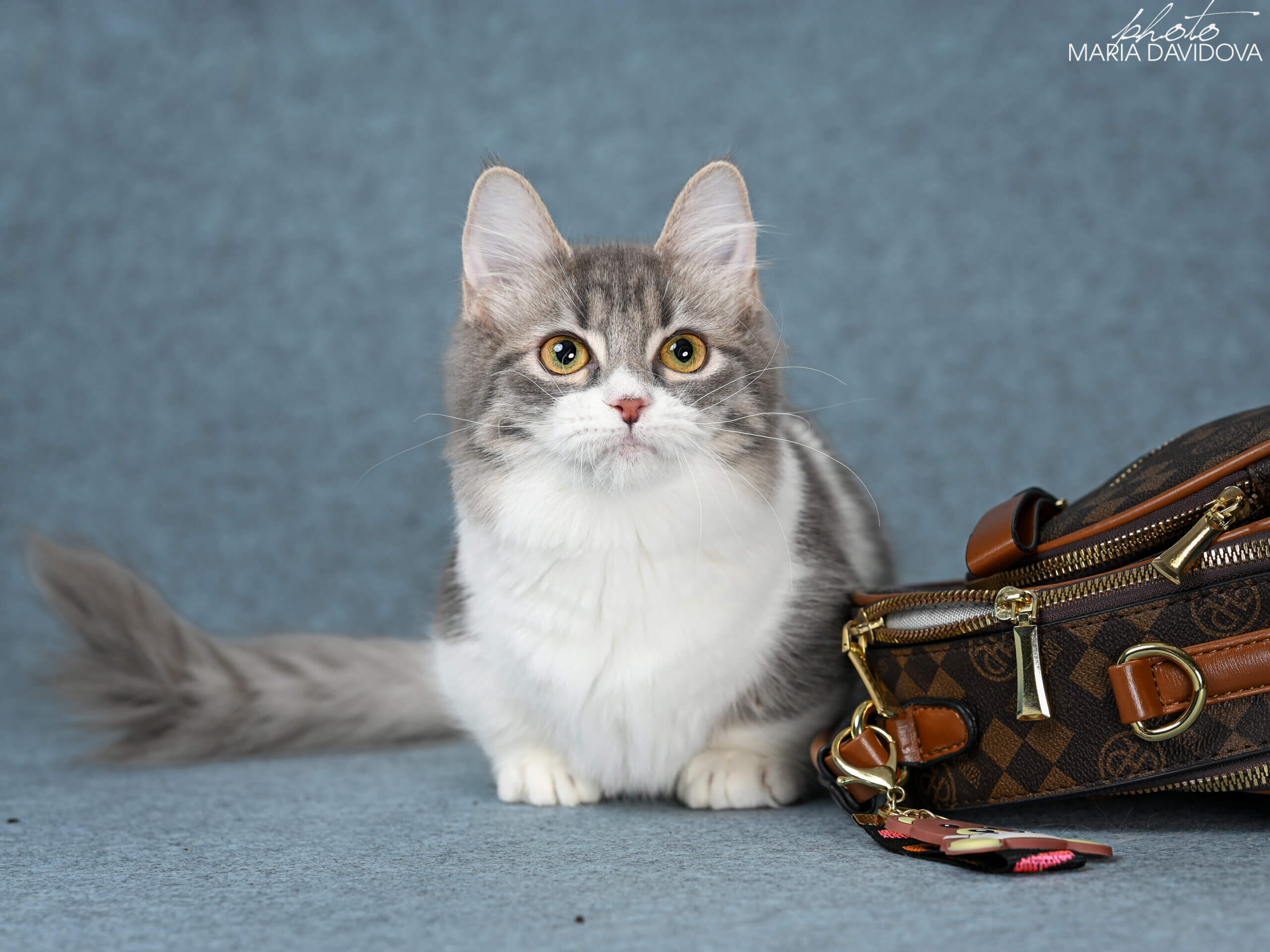
Health and Body Structure
Female munchkin cats are small framed cats with short legs, a result of natural mutation, achondroplasia. They generally weigh 2.3 – 3.2 kg and cease growing at approximately their one year mark. Their structure is unusual-standard torso, but disproportionally shorter legs than most cats.
Although this provides them with a pretty appearance, it carries specific maintenance requirements. Their body structure can bring up health concerns, so it’s clever of owners to stay on top of the situation, collaborate with a veterinarian, and understand the risks. Routine checkups and candid conversation with your breeder or vet can help identify any issue early.
| Health Concern | Description | Impact on Cat | Owner Actions |
|---|---|---|---|
| Lordosis | Spinal curve | May affect breathing | Vet visits, monitor signs |
| Joint problems | Hip/knee issues | Can slow movement | Diet, exercise, supplements |
| Back strain | Stress on back | Pain, trouble moving | Watch posture, regular checks |
| Obesity | Extra strain | Worsens mobility | Balanced food, playtime |
Lordosis Risk
Lordosis is a condition that causes the spine to curve excessively. In munchkin cats, their short legs and elongated body leads to an increased risk of developing lordosis. This can squash their lungs and render breathing difficult.
Certain cats can survive with mild lordosis, but in severe cases it can restrict their movement or even decrease lifespan. It’s not always obvious at birth, so frequent vet examinations are the ideal method of detecting it early. Reputable breeders attempt to reduce these risks by not breeding cats that have known indications of the issue. This is one reason that breeding for appearances alone is dangerous and unfair to the animals.
Joint Health
Joint health is a big deal with female munchkin cats, especially as they age. Their stubby legs can cause extra strain on their joints compared to other breeds. Feeding them a diet high in things like omega-3s and glucosamine can keep their joints in top form.
Play and light exercise keeps their muscles strong, which safeguards their joints. Some vets will recommend joint supplements if they notice early signs of wear. Observing your cat’s movement, such as jumping or climbing, can help indicate if they’re experiencing joint discomfort.
Mobility
It’s those short little legs that make the munchkin unique, different than other breeds and different in the way they locomote. They may not leap through the air like other cats, but they learn to play and get around in their own fashion.
You’ll observe them sprint and jump for joy, but their fashion is geared more towards climbing than leaping. Install ramps and safe spots so they can experience without tension. If you catch them limping or dragging their feet, phone your vet-these may be hints something is awry.
Caring for Your Petite Cat
Female munchkins, with their tiny frames and stubby legs, require special care to help them flourish. Their affectionate personalities and playful dispositions bring joy to any household, but they have their own requirements. Here’s a checklist to guide you:
- Feed an appropriate life stage premium diet.
- Add joint health supplements if your vet suggests.
- Brush their coat weekly, more if long haired.
- Take them for check-ups every month as kittens.
- Maintain their weight and be on the lookout for obesity.
- Give them safe spaces to climb and play.
- Offer lots of love, play, and social time.
Grooming is an absolute necessity for female munchkins. Their short or long coats require attention to maintain skin and hair in good condition. For long-haired cats, brushing once a week stops mats and knots.
Shorter coats still require a weekly brushing to prevent shedding and distribute oils. This easy routine translates to reduced clutter and a happy, healthy feline.
Diet is a huge factor. Small cats, in general, and munchkin cats, in particular, require a diet rich in protein and fat, even more so as a kitten. Growing munchkin kittens require more calories than adults, along with supplemental protein for muscle/joint growth.
Adult small cats thrive on approximately 200 calories daily, and at least 6.5 grams of protein per 100 calories. Because their little frames are susceptible to joint strain, your vet might recommend supplements such as glucosamine.
Mind their weight-munchkins can easily become overweight which can exacerbate joint issues. Modify feeding portions as they get older or activity declines.
A secure and entertaining household is vital to a small cat’s well-being. Their stumpy legs can limit their jumping ability compared to other cats, so ramps and low platforms keep them moving!
Steer clear from high shelves or places they can take a tumble from. Soft beds and cozy little nooks allow them to rest their joints. Toys, scratchers and daily play help them expend energy and stay sharp.
Mini cats adore company and thrive on consistent human interaction or even other furry companions. If you’re away frequently, a second soft furry body will prevent them from being lonely.
Their social nature will best flourish in a household where people adore playing, chatting, and cuddling.


